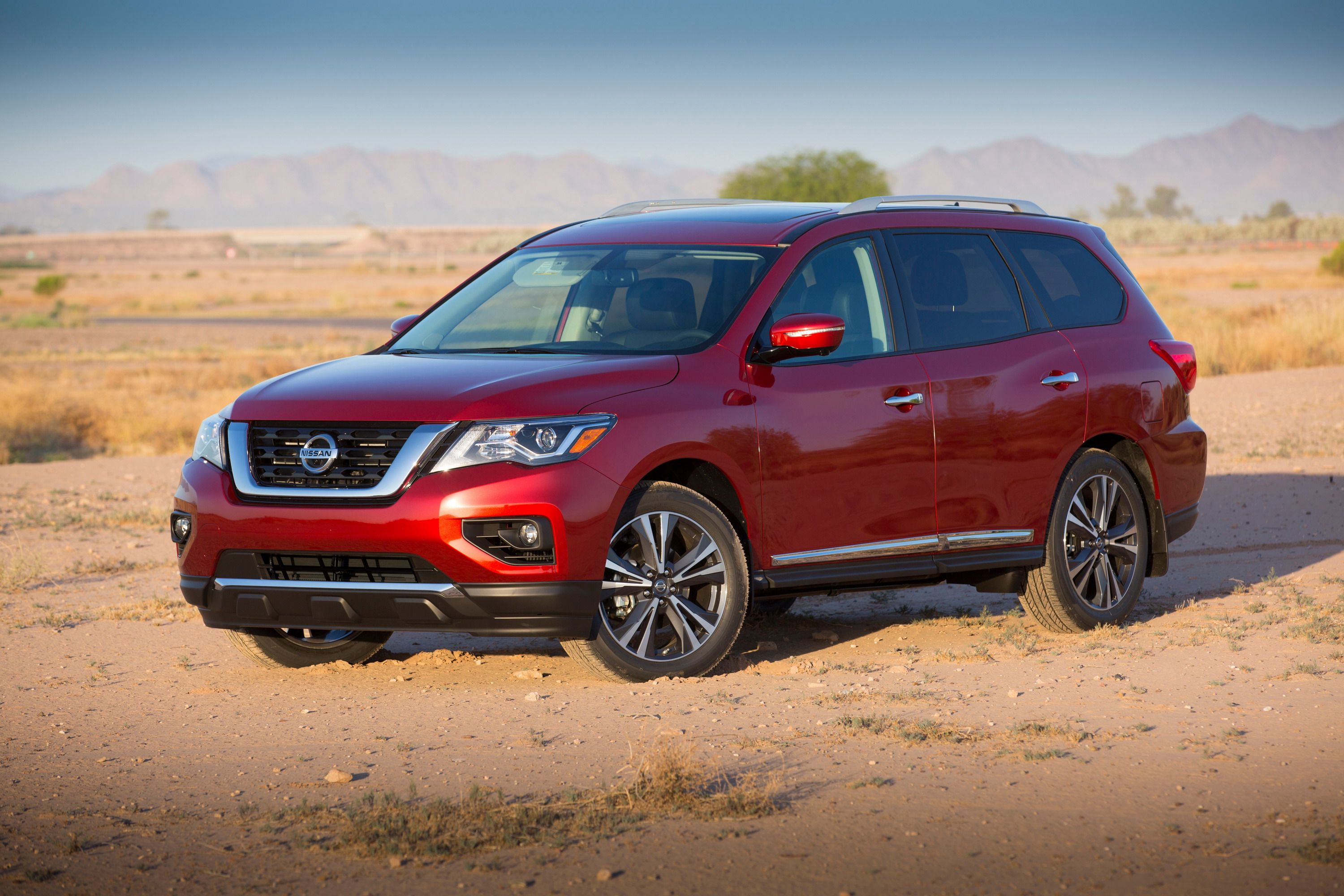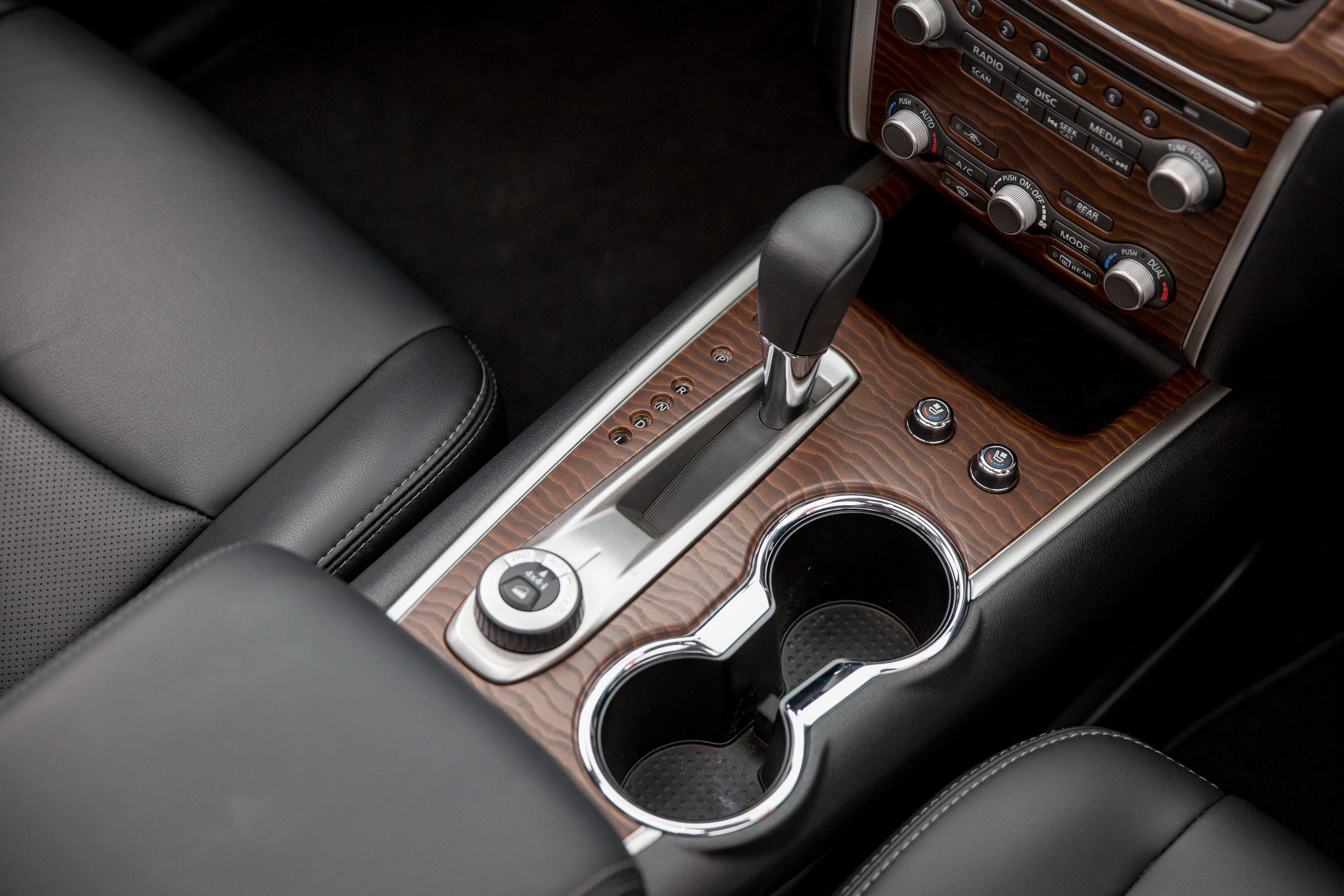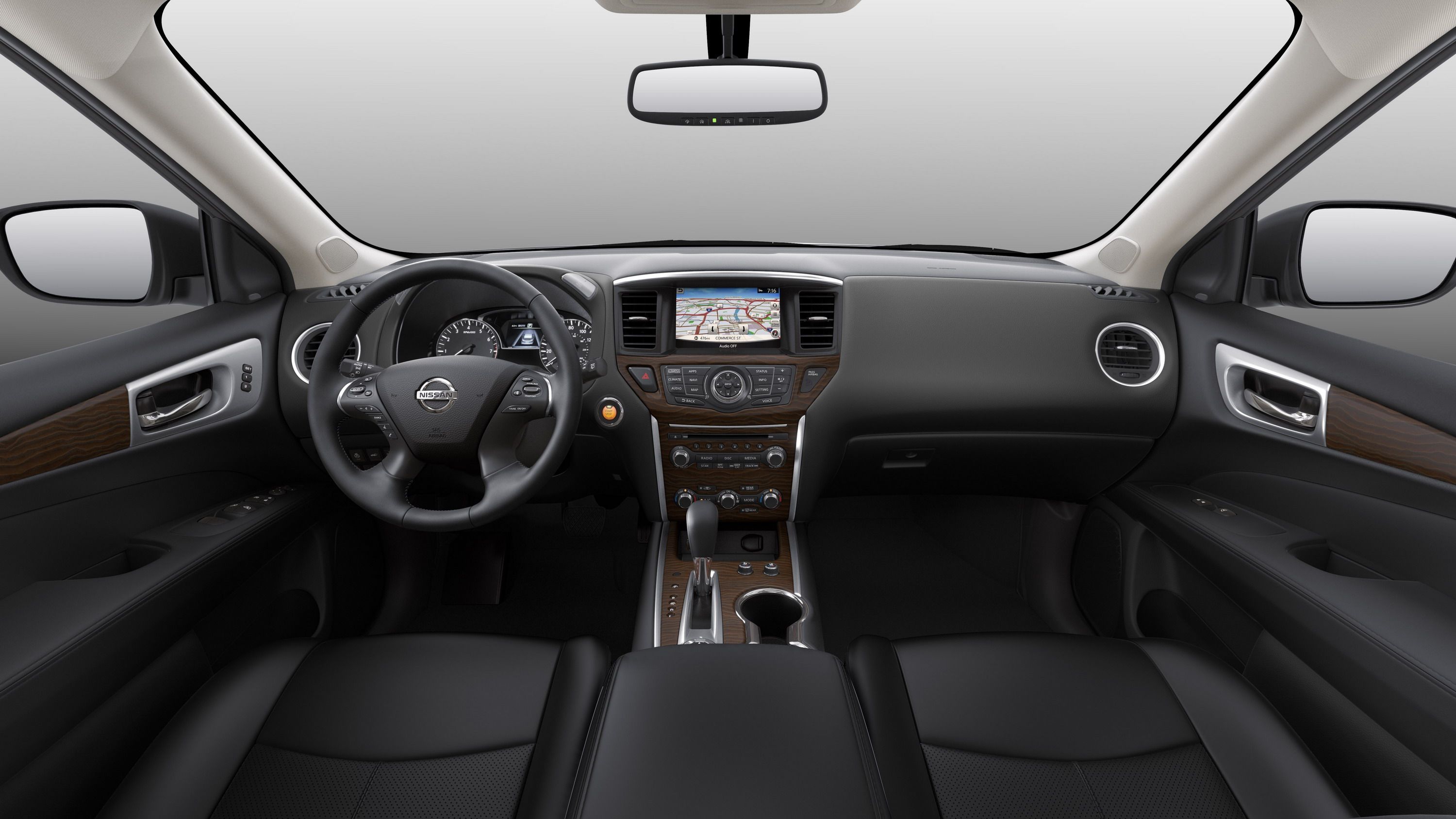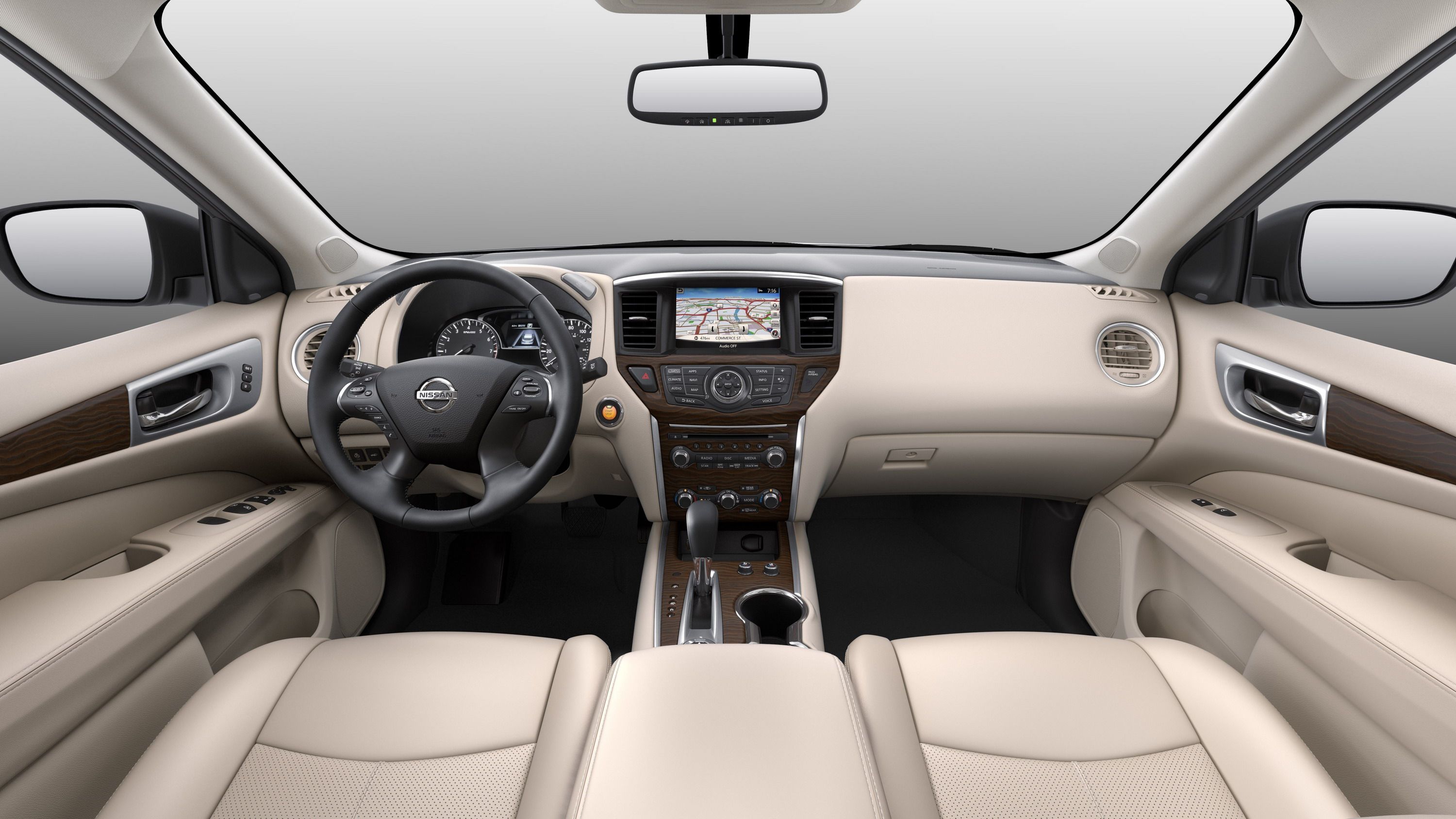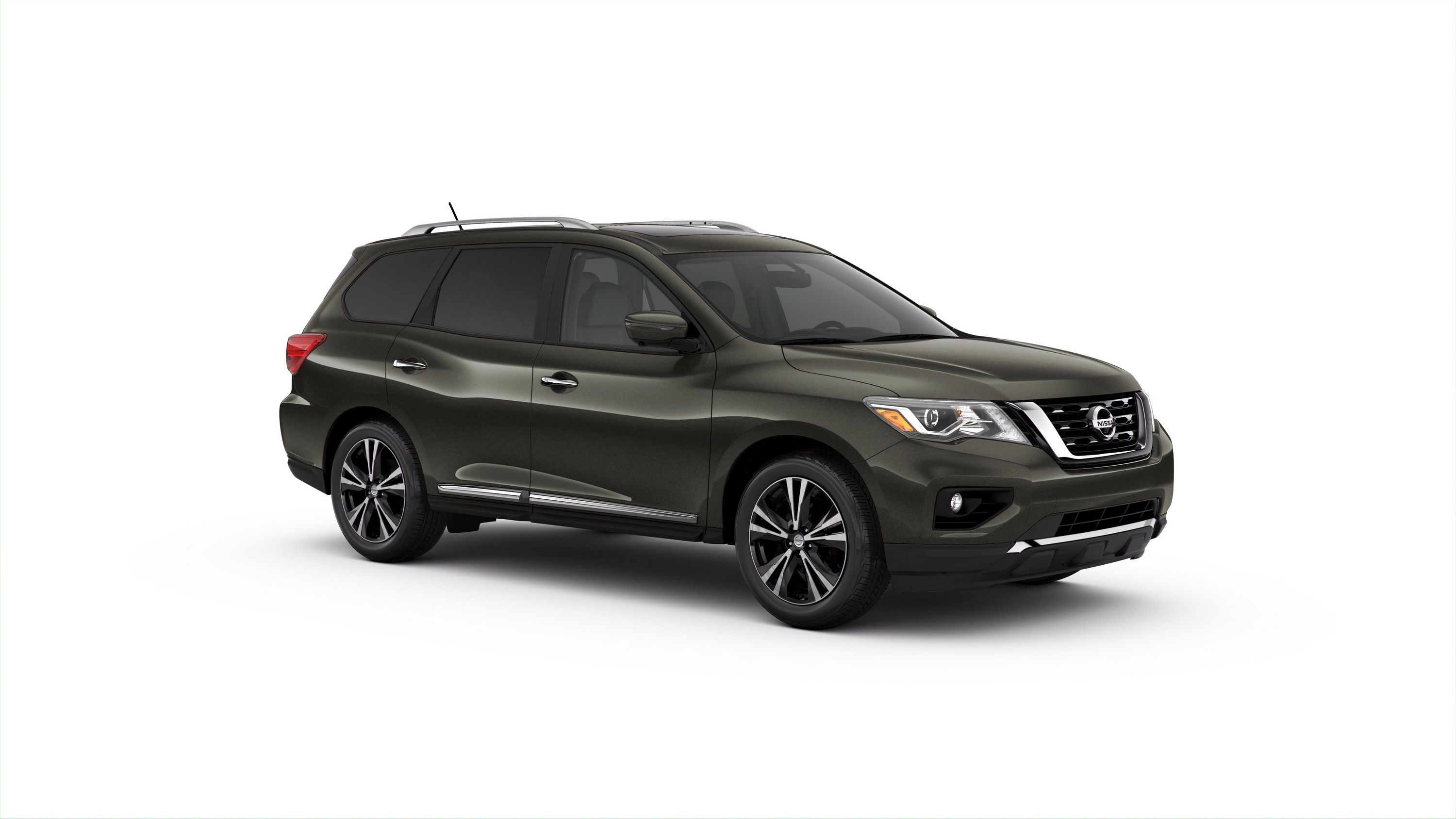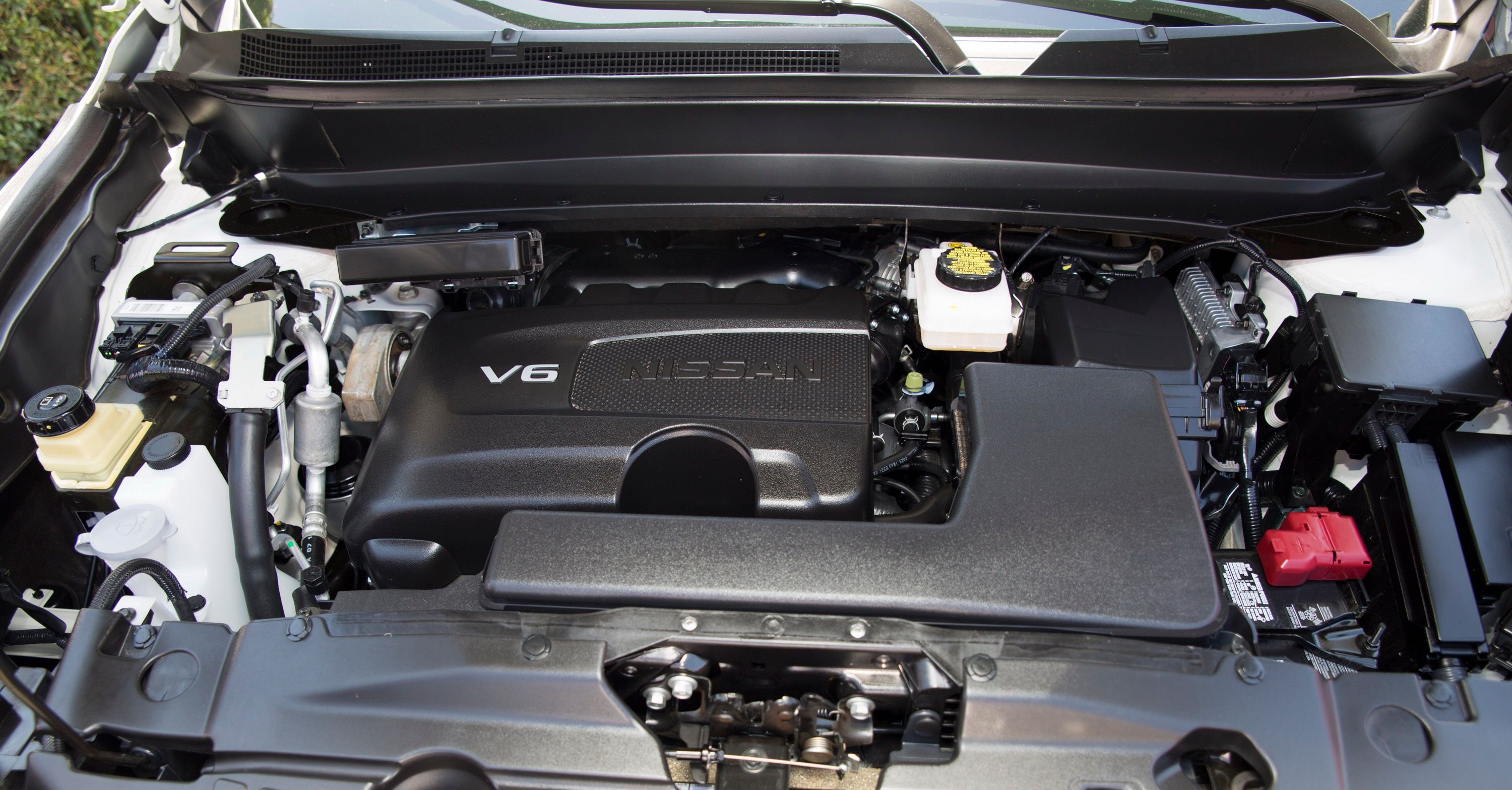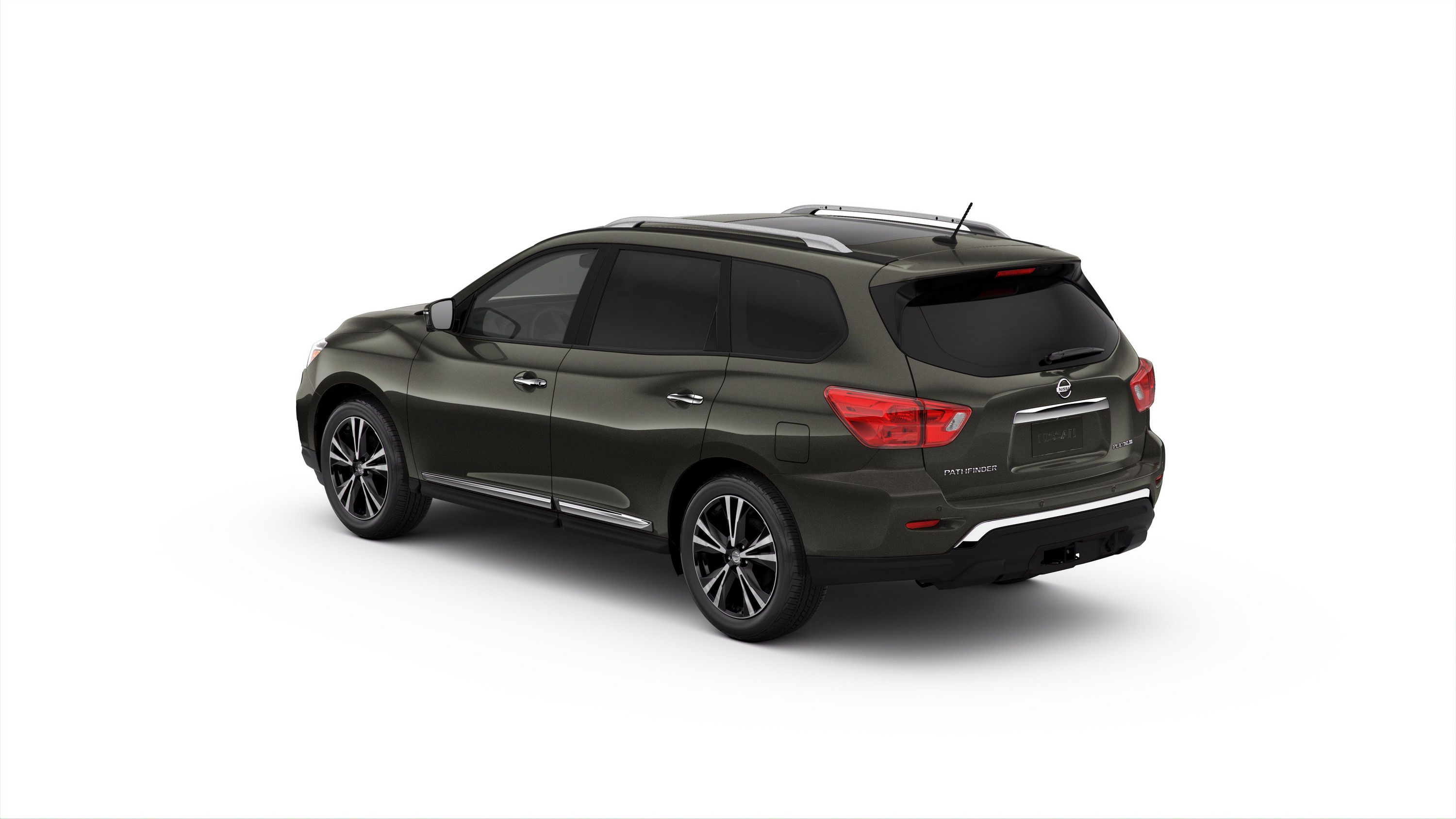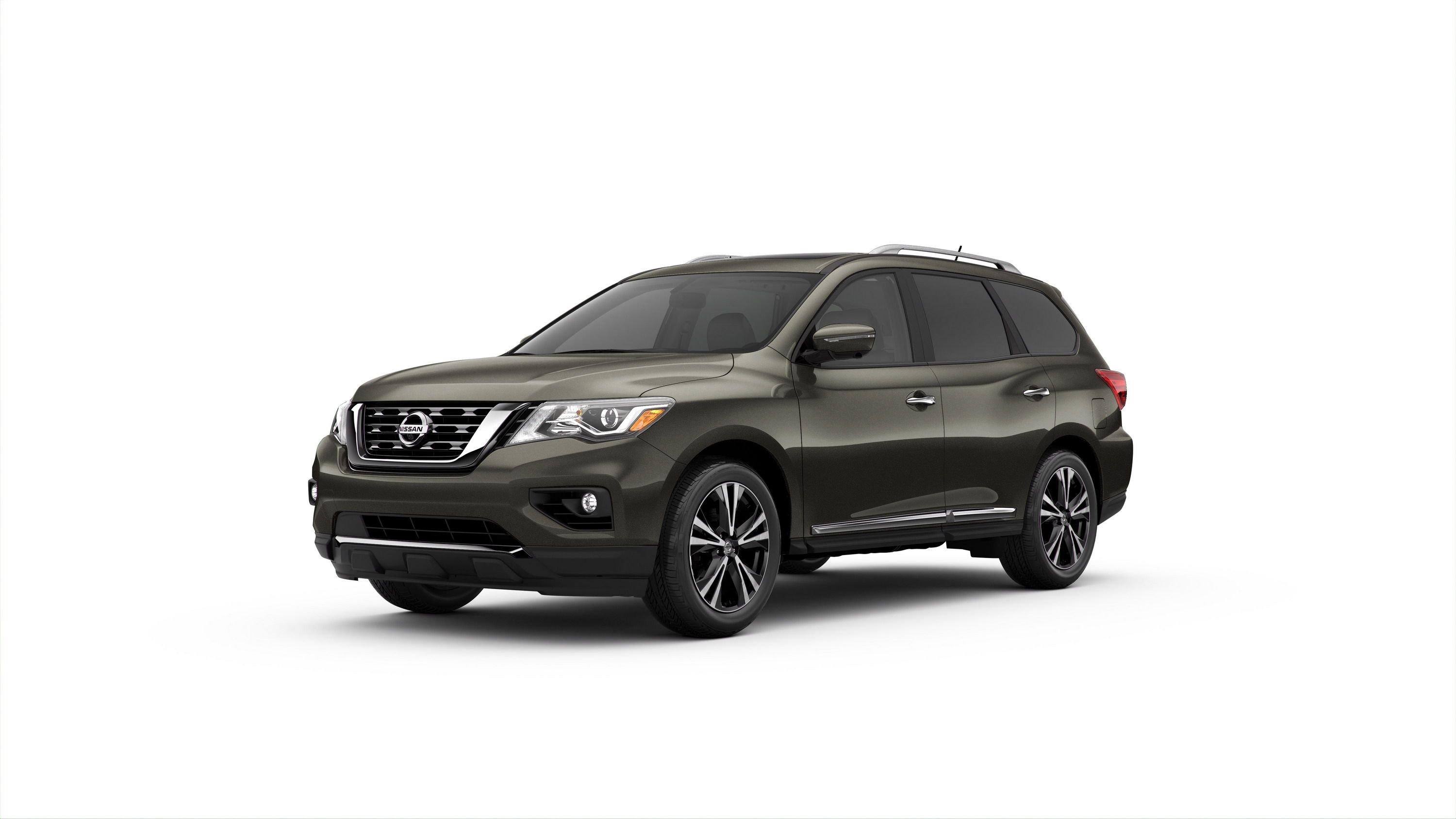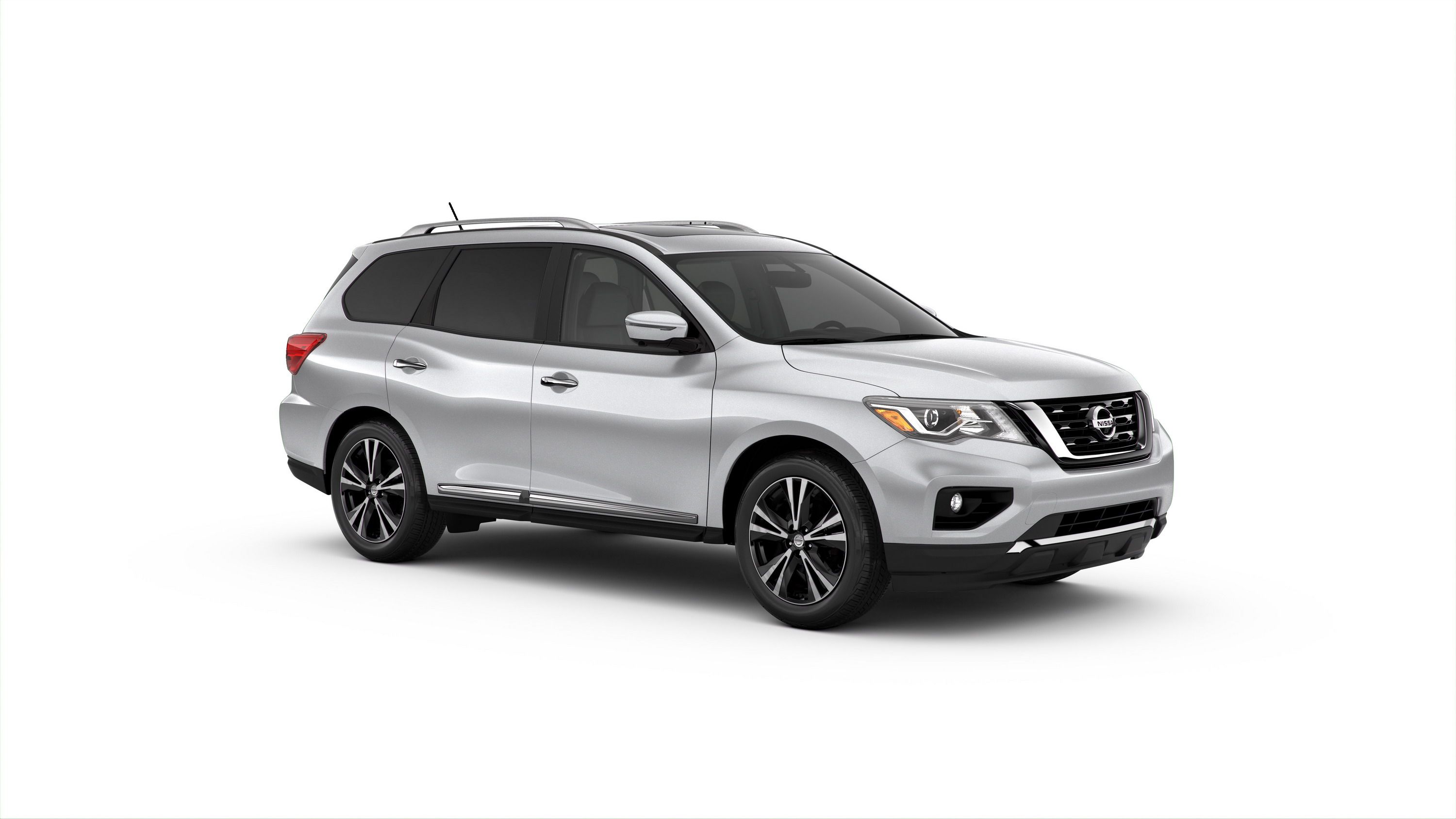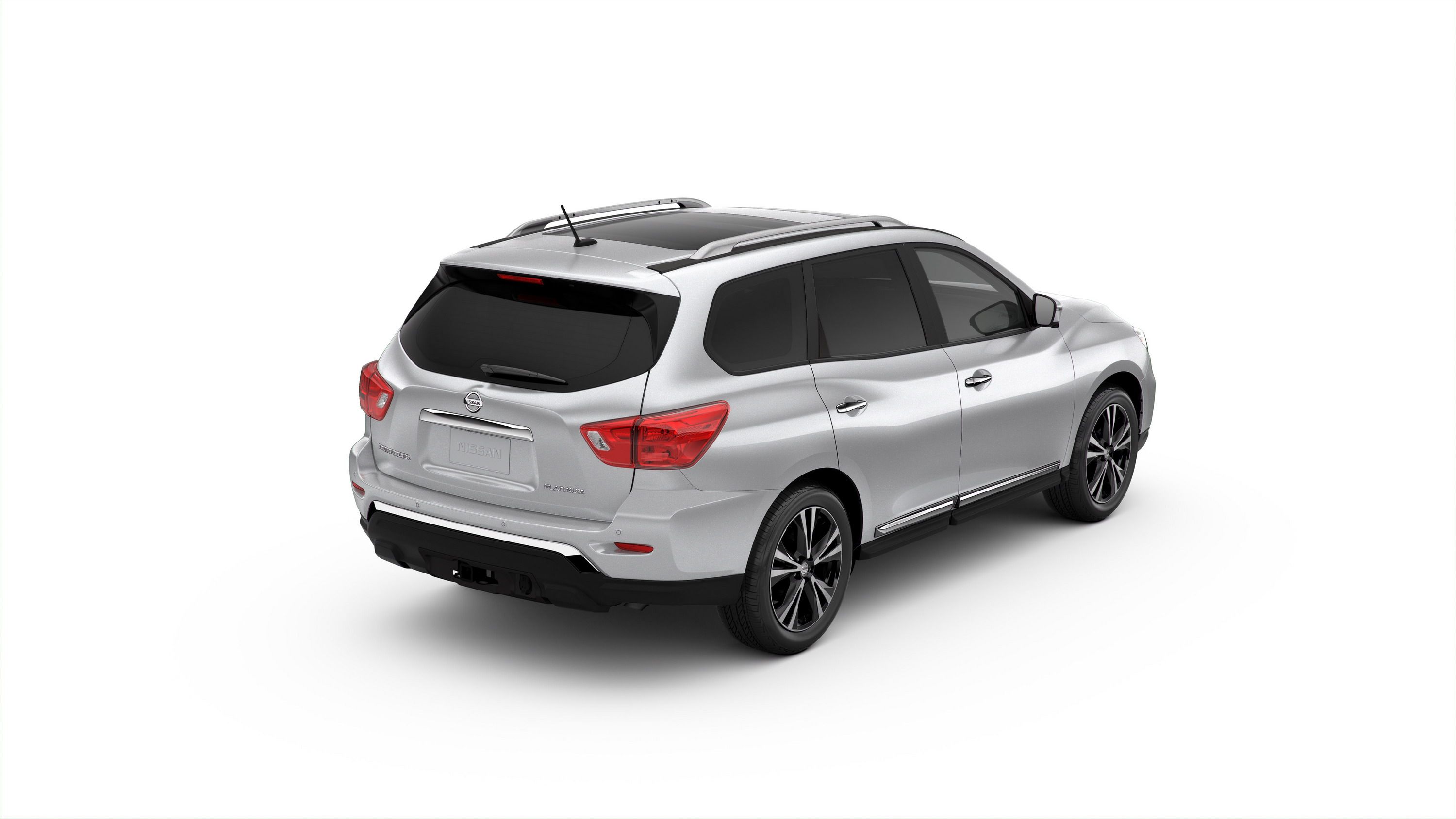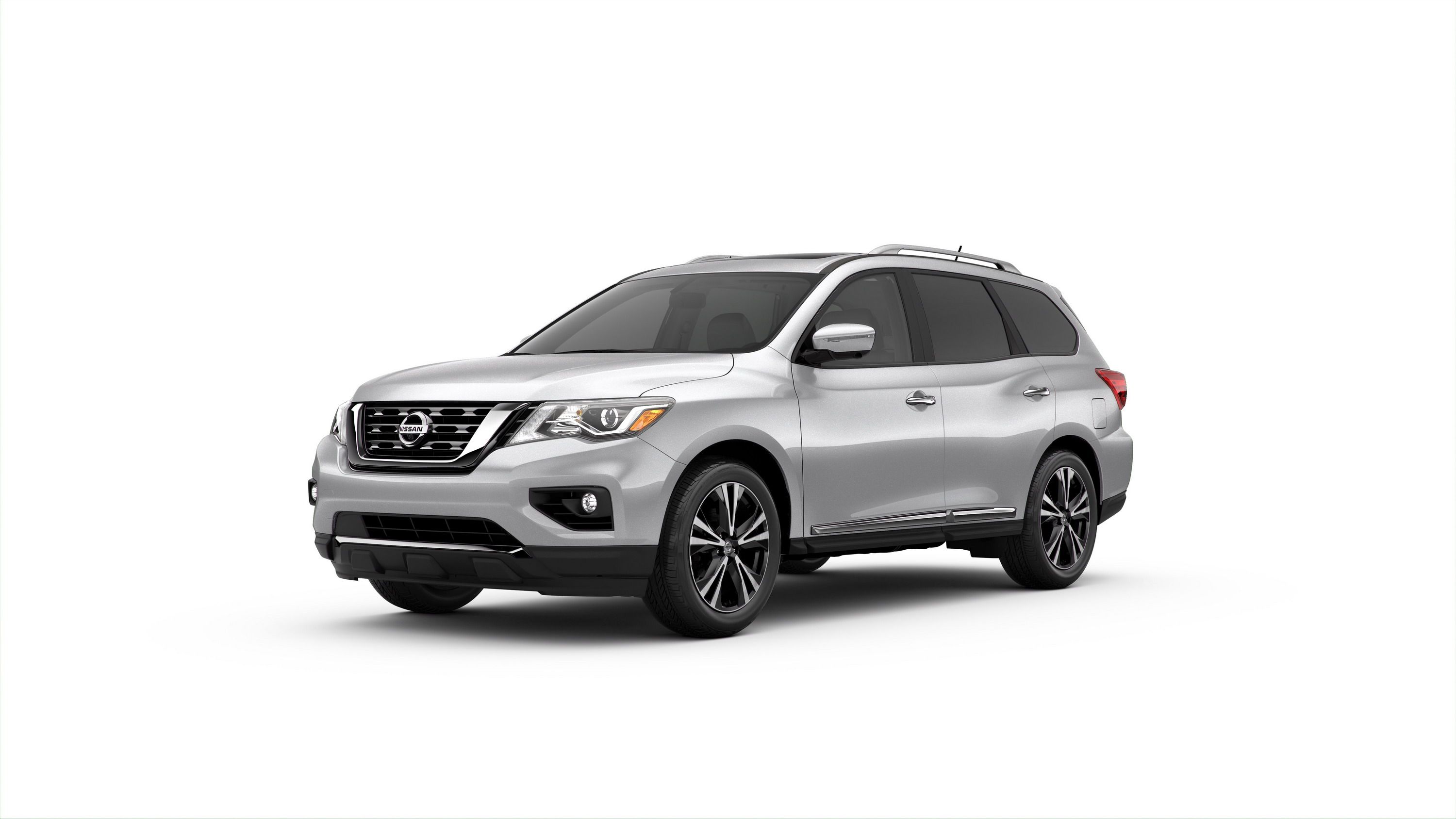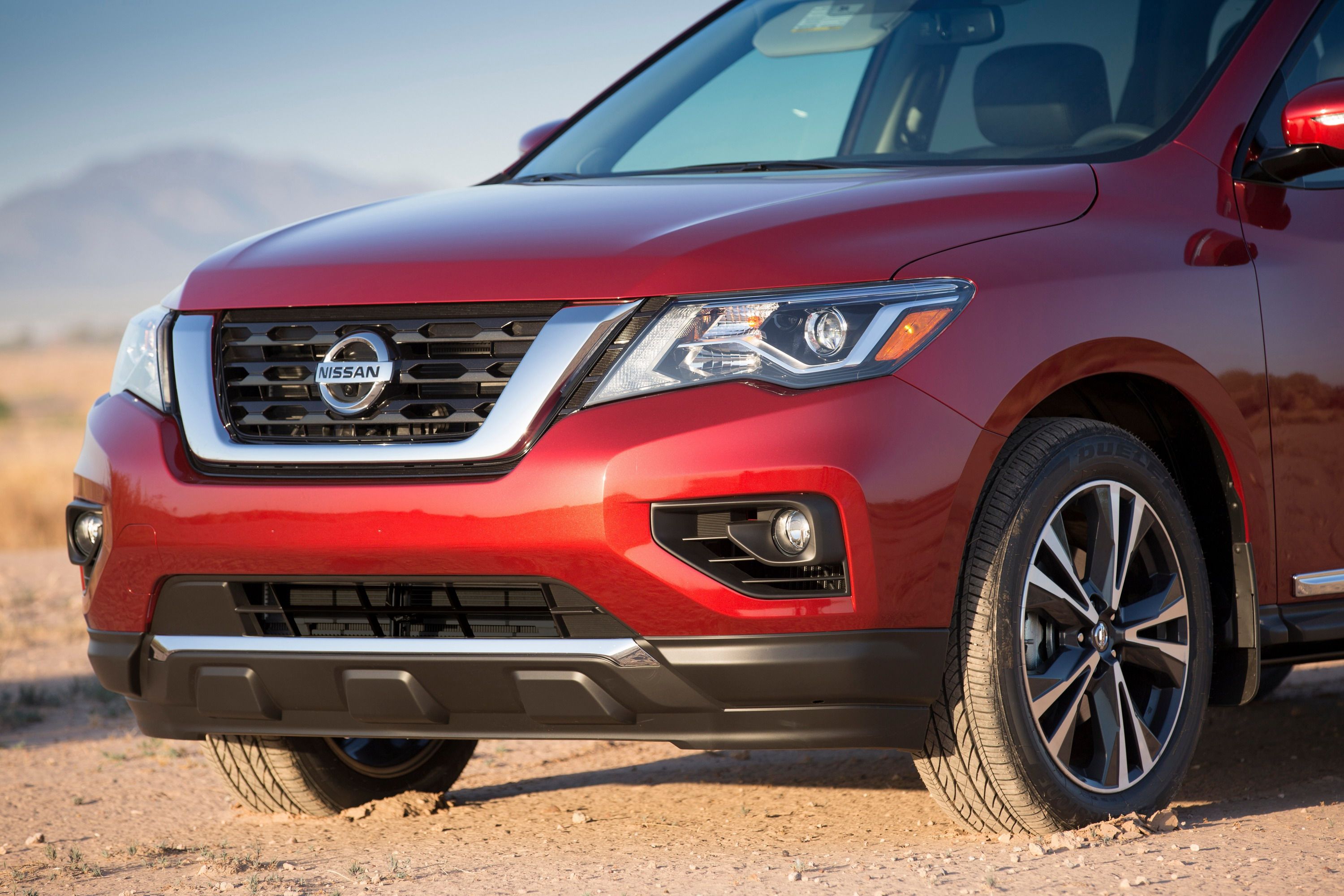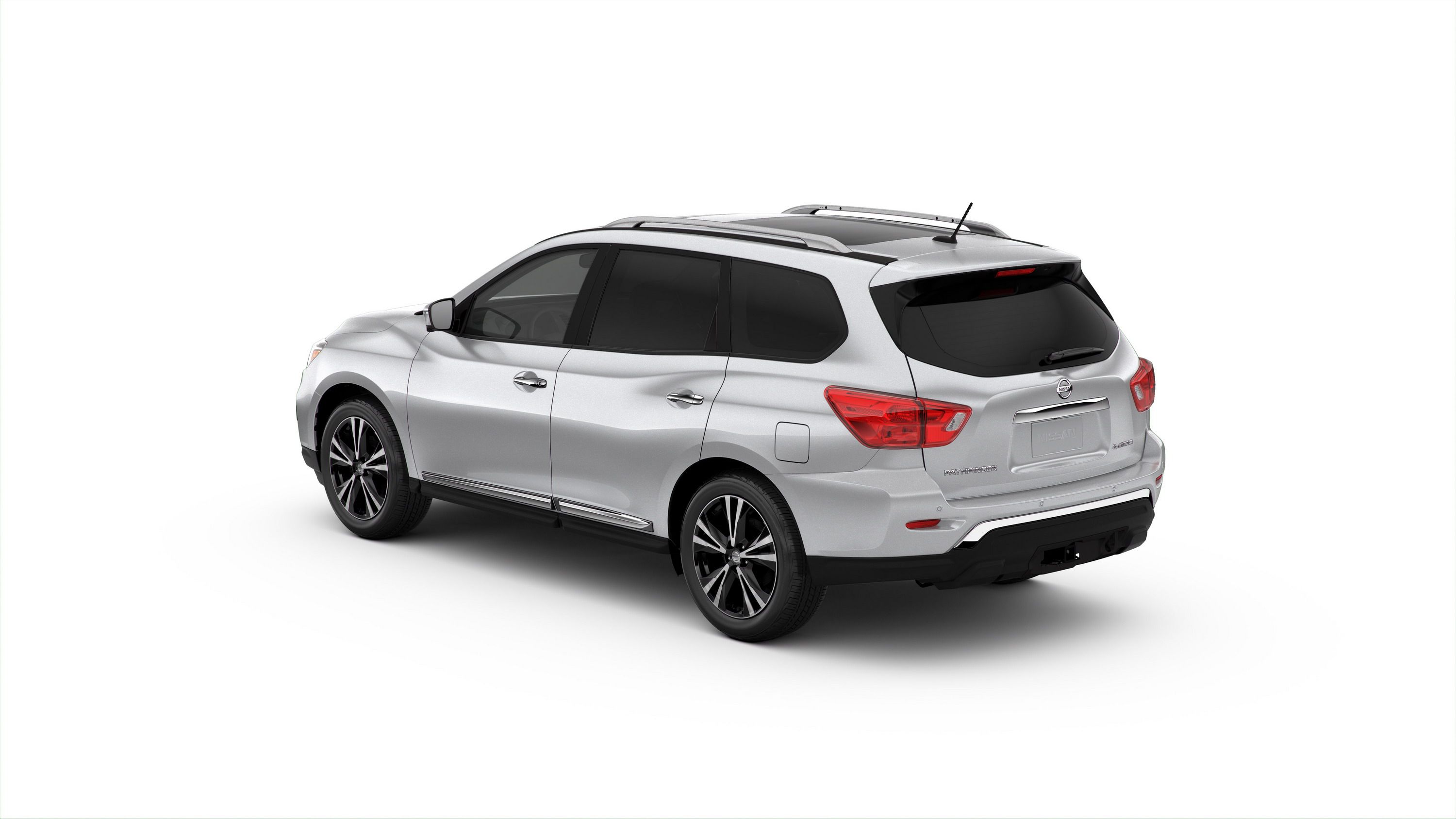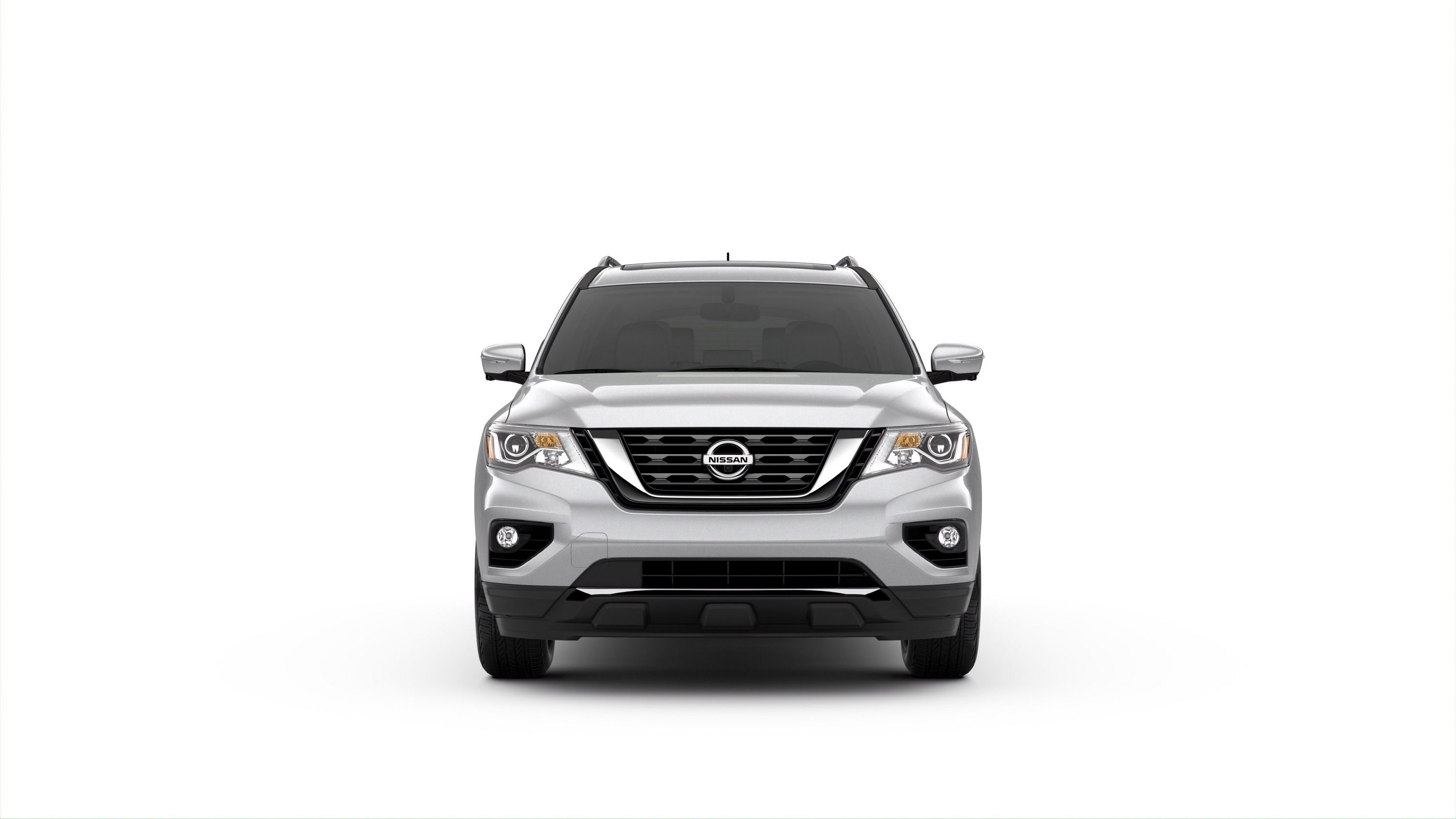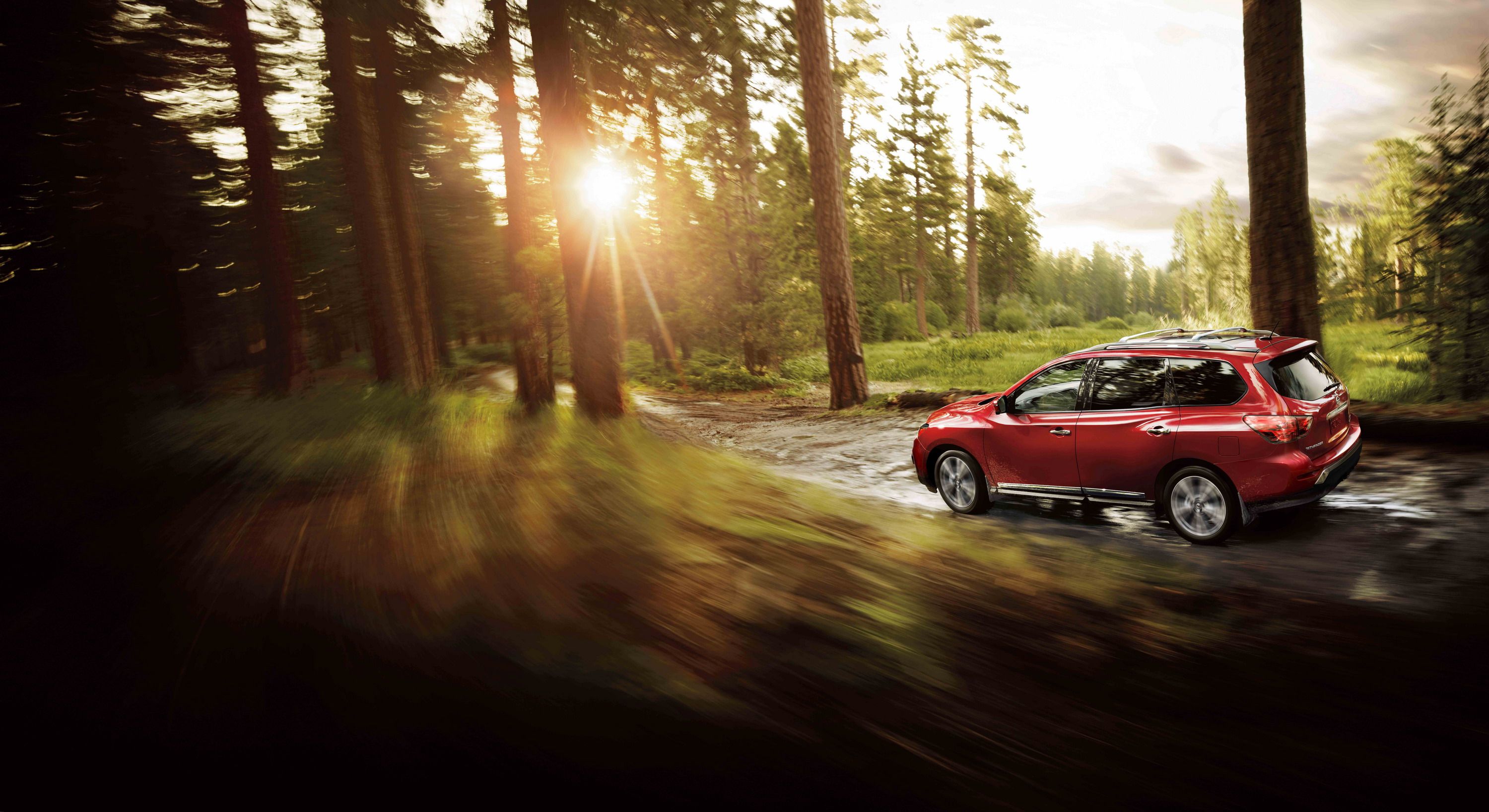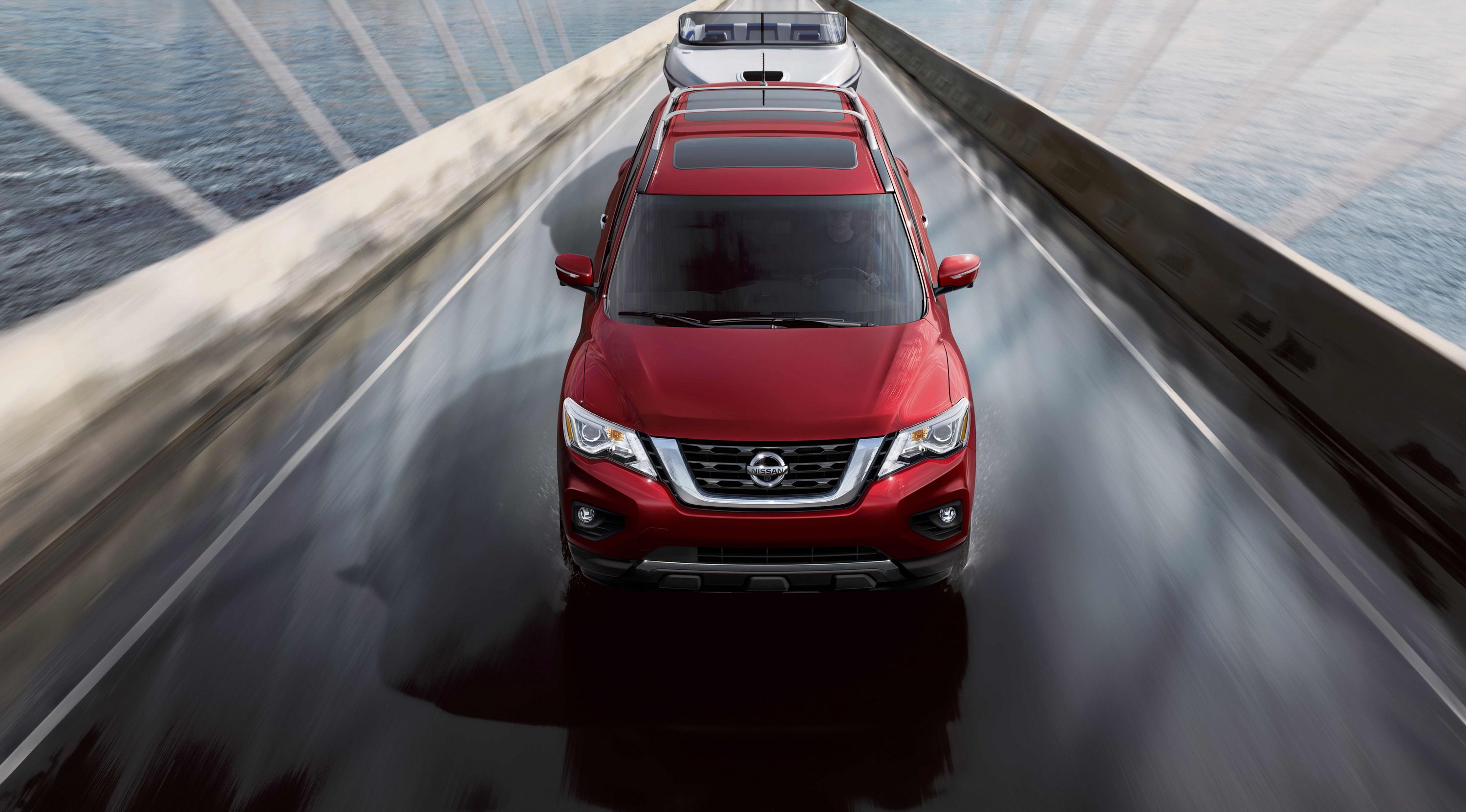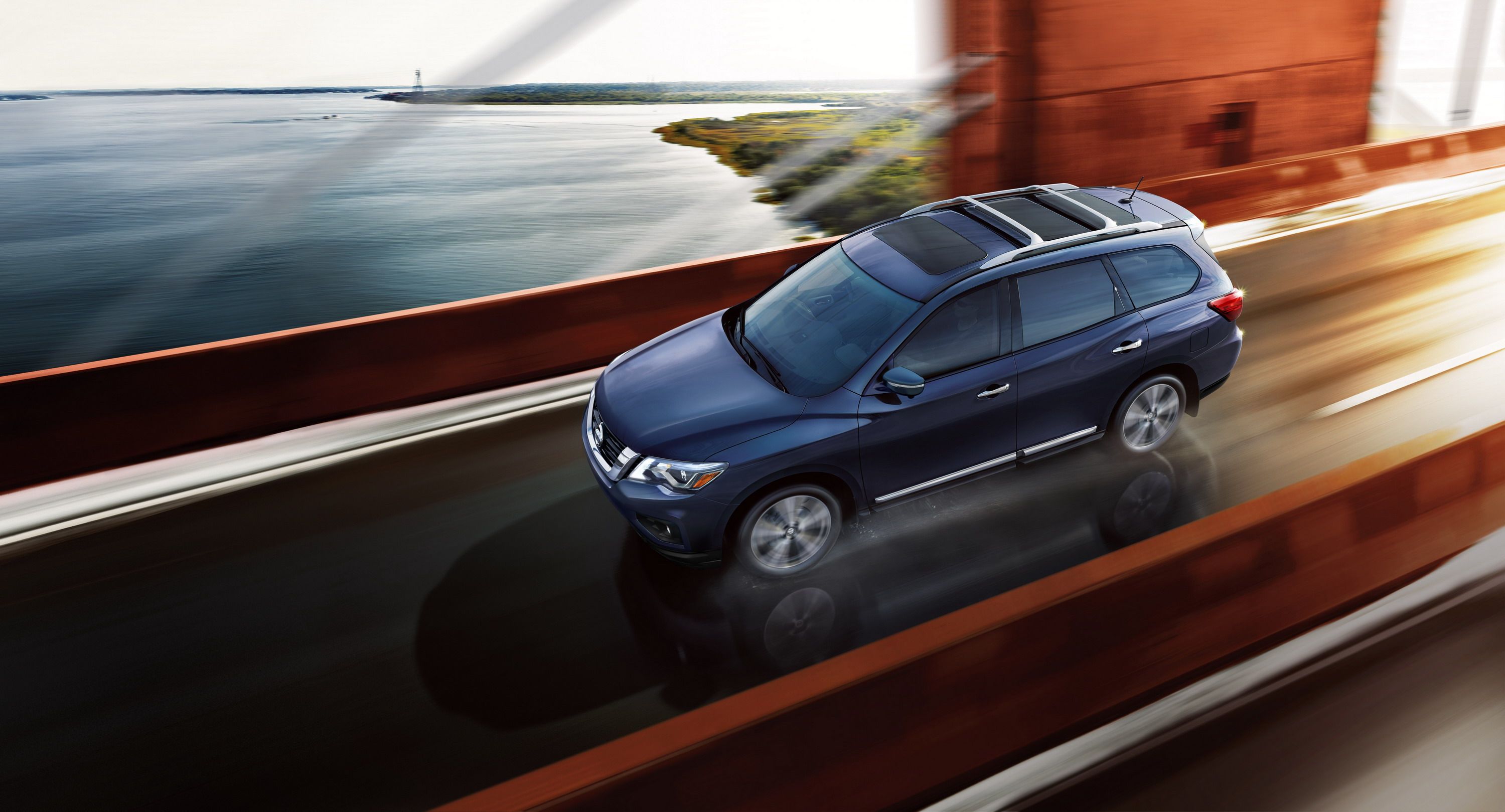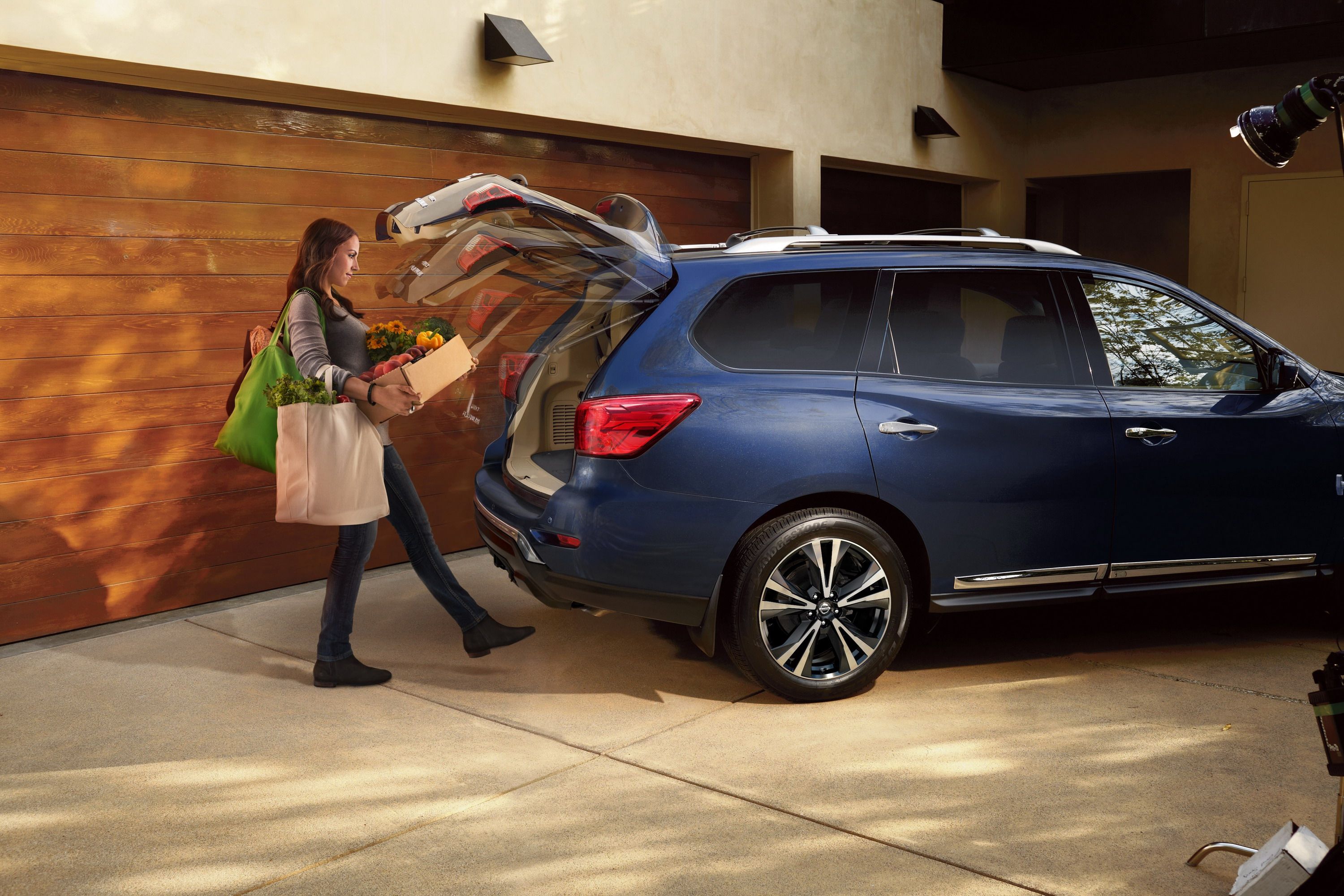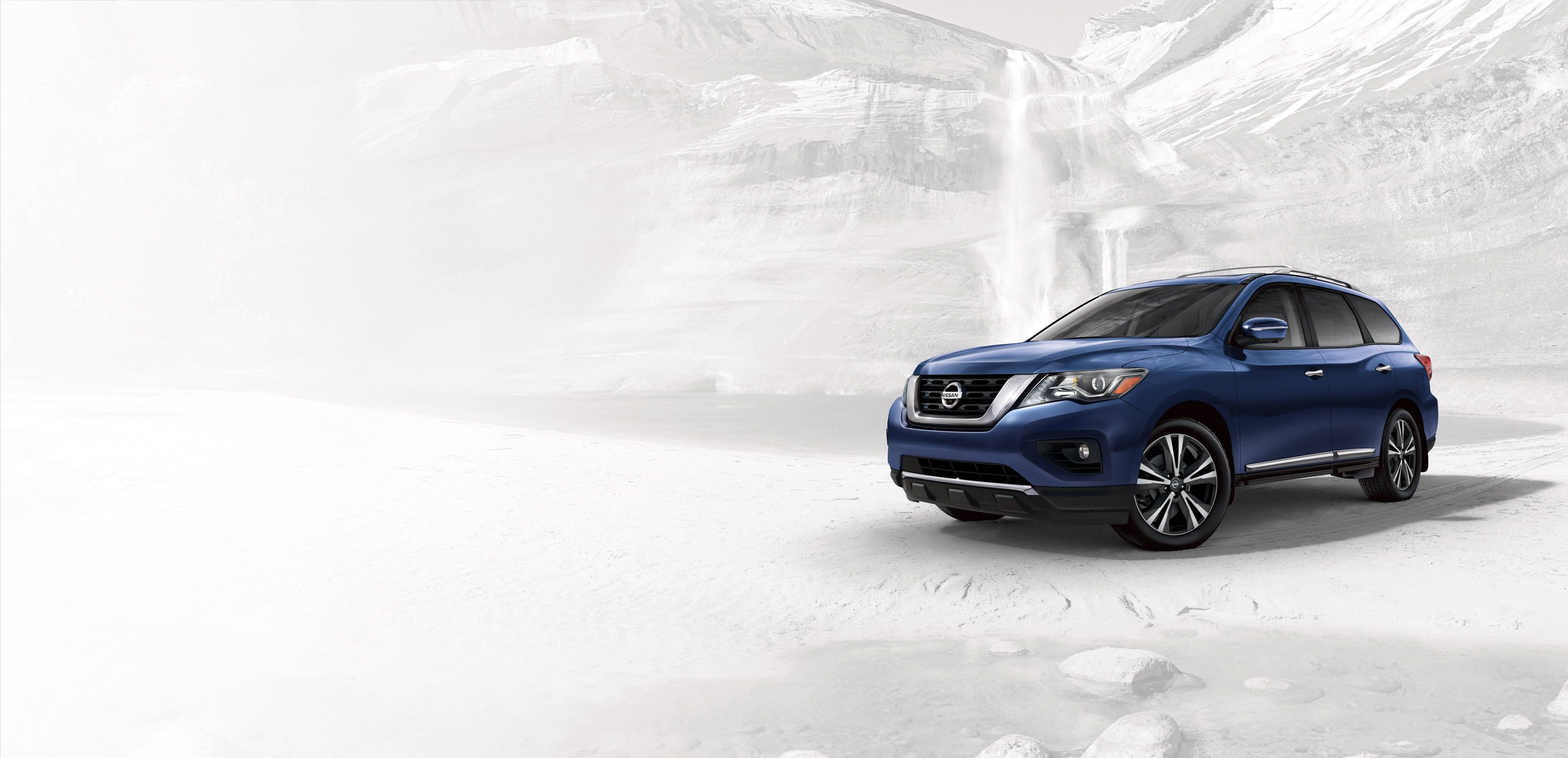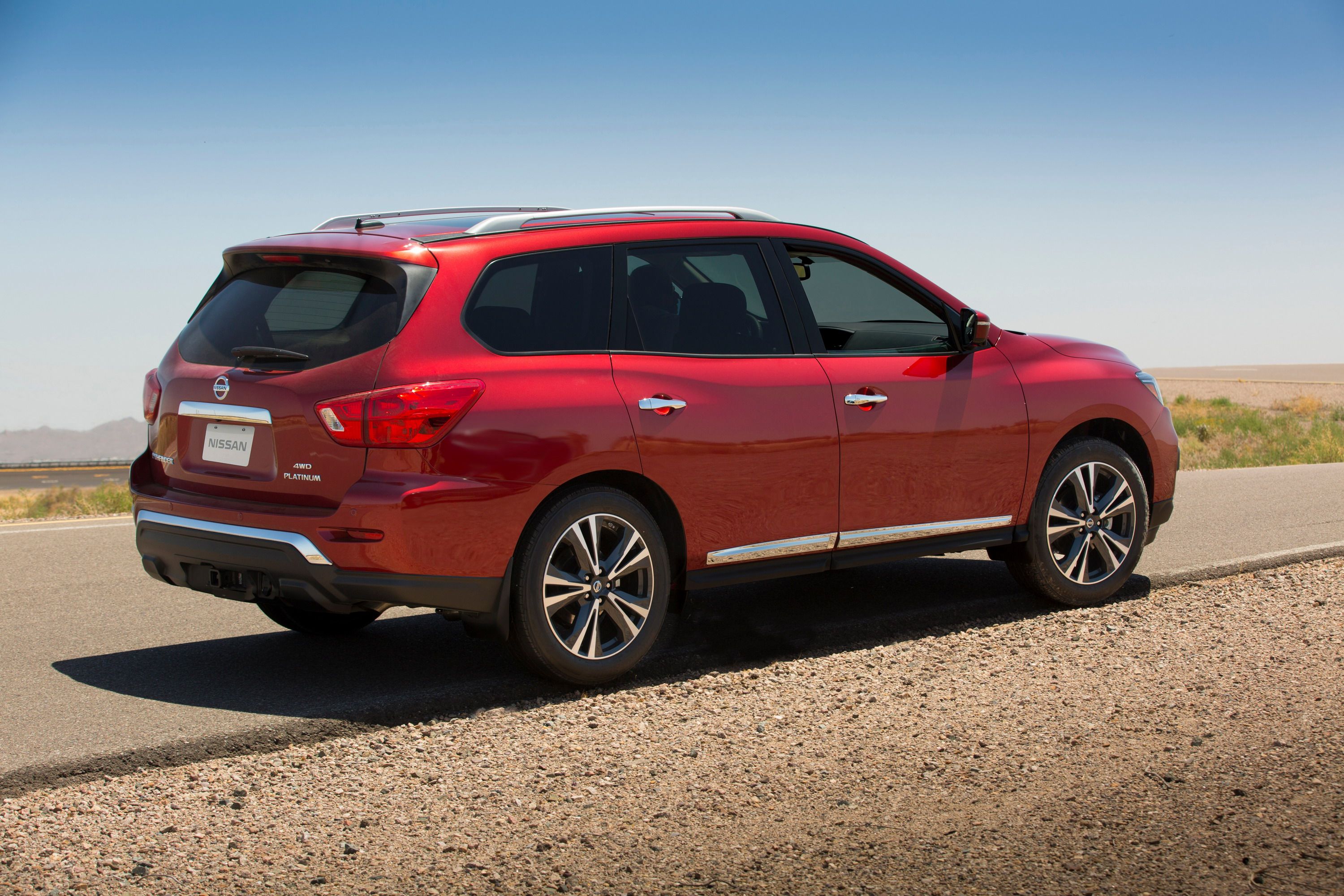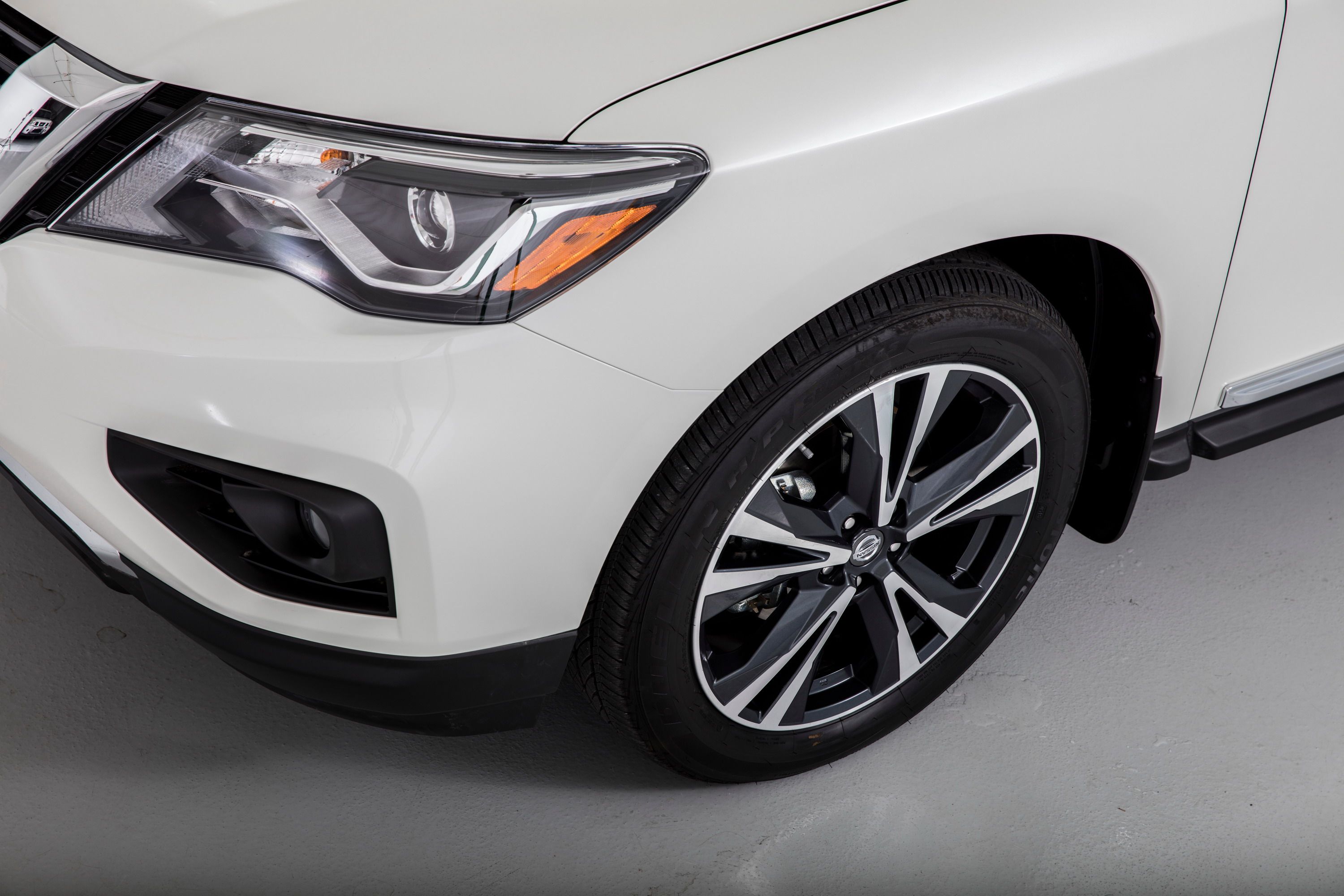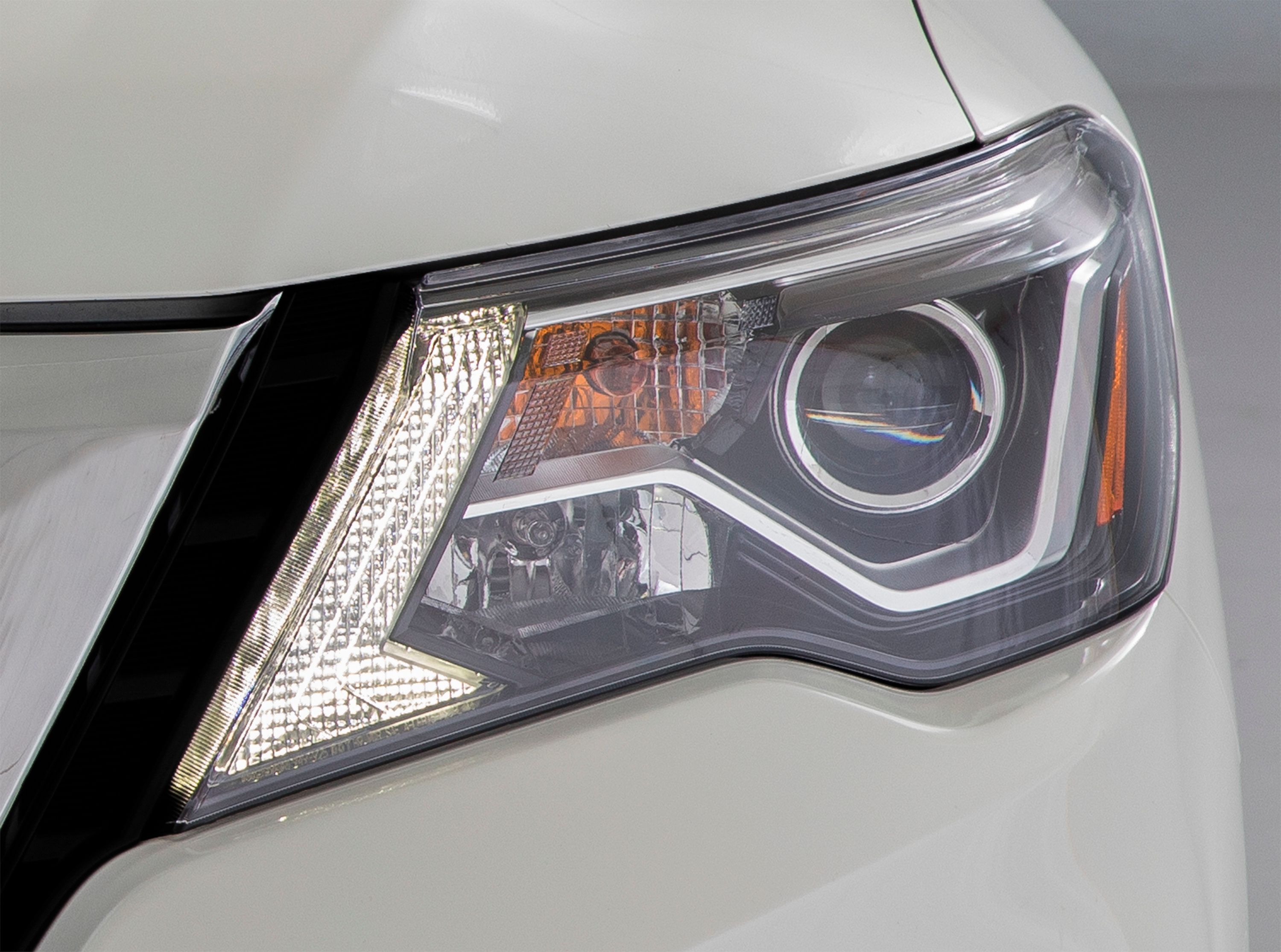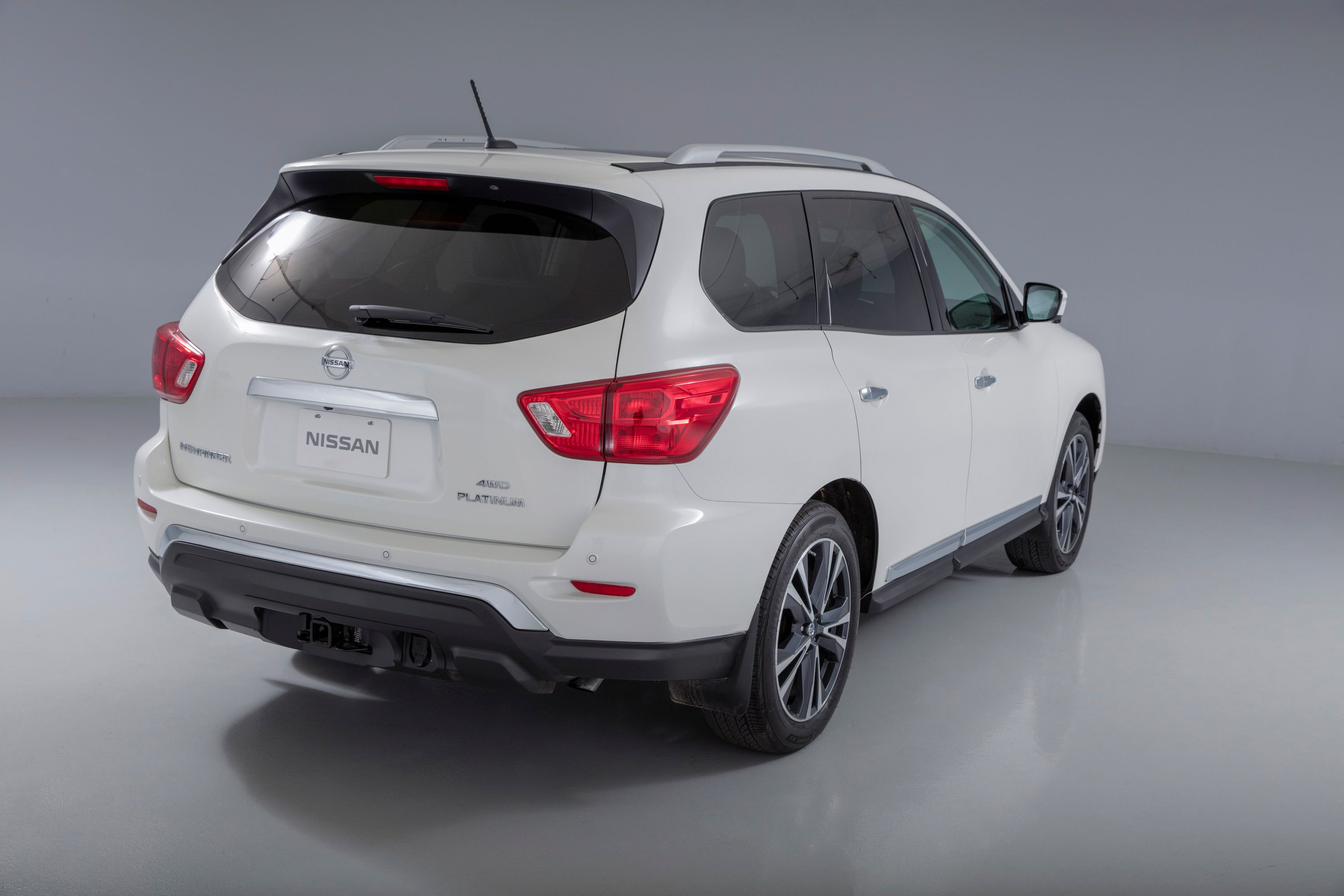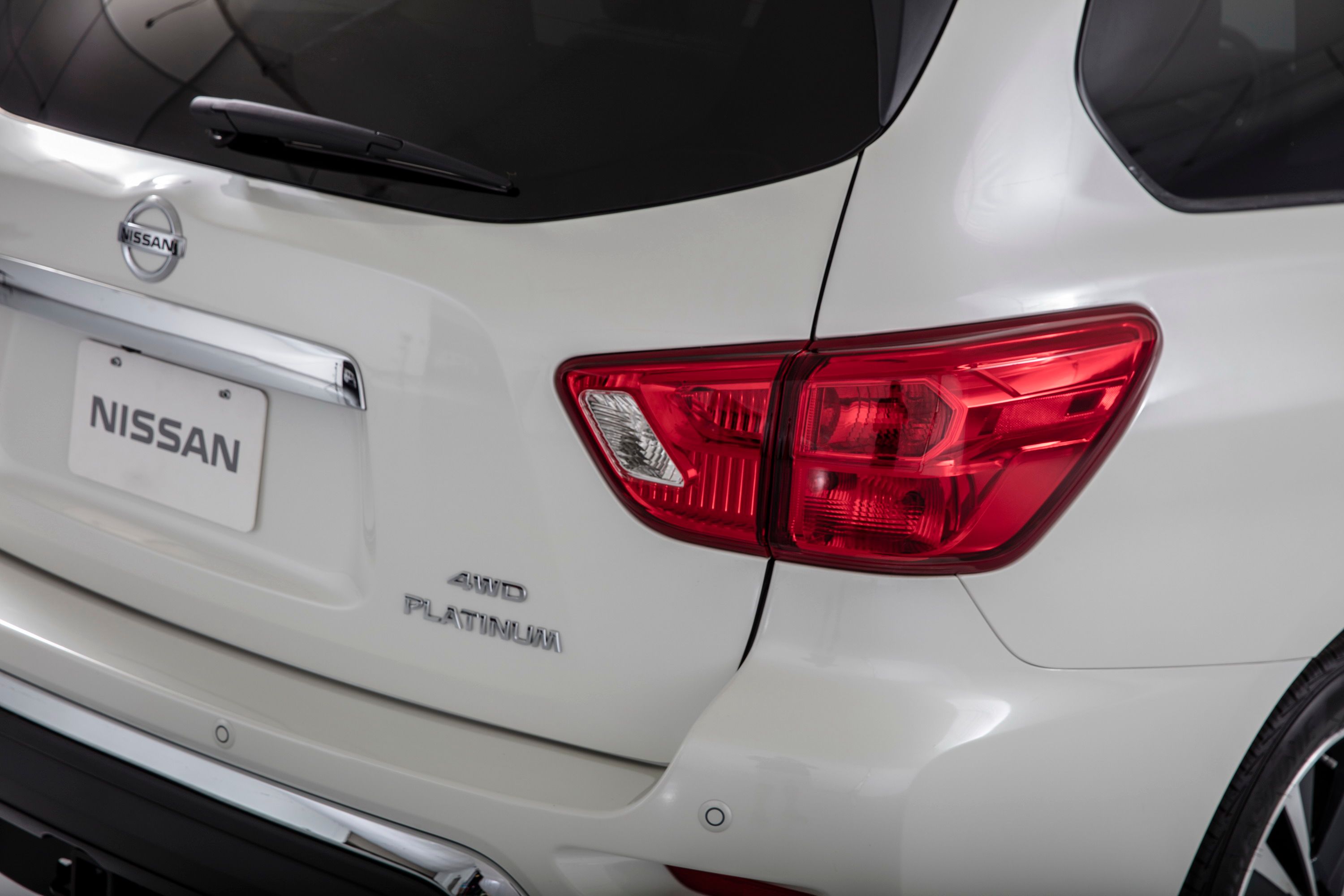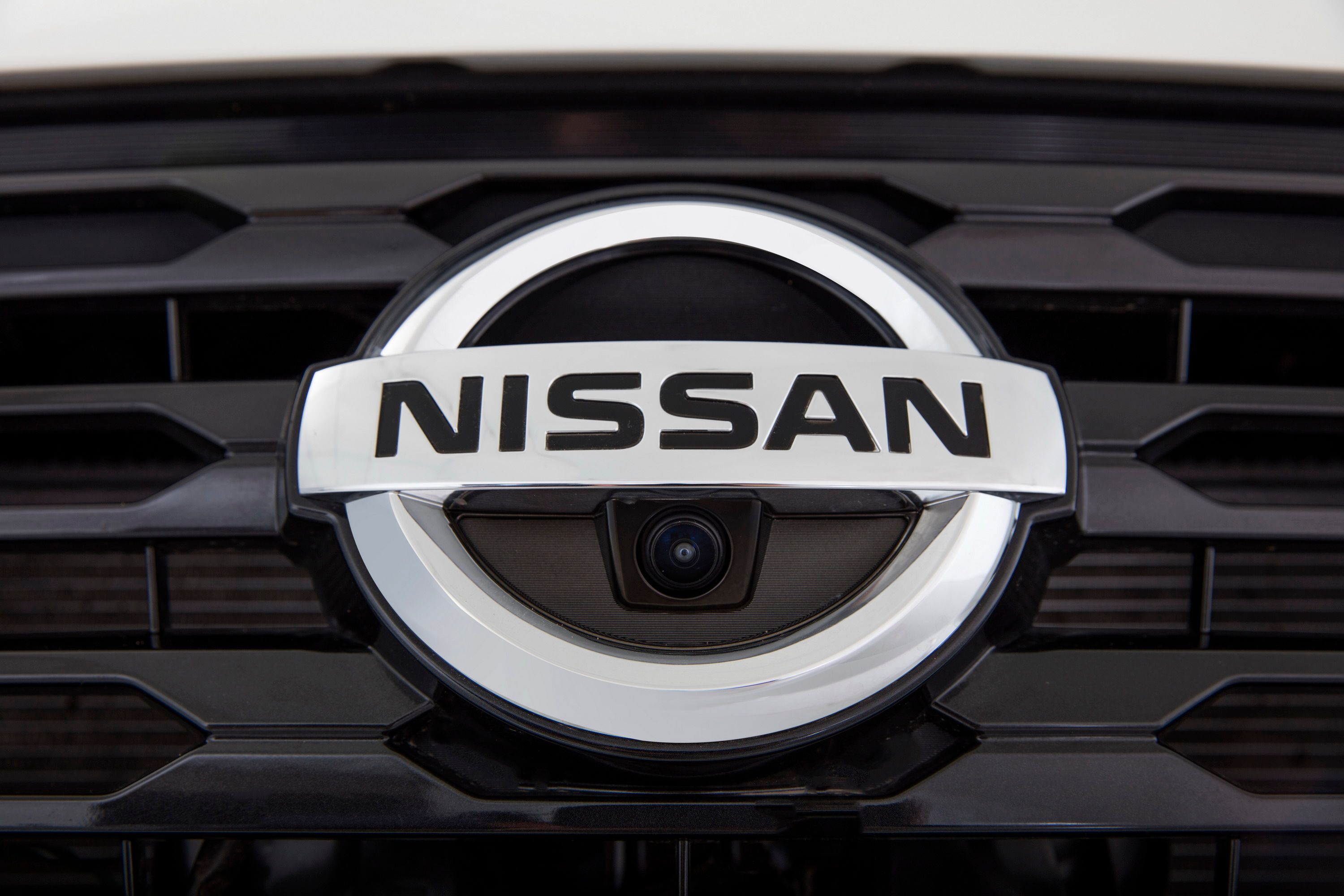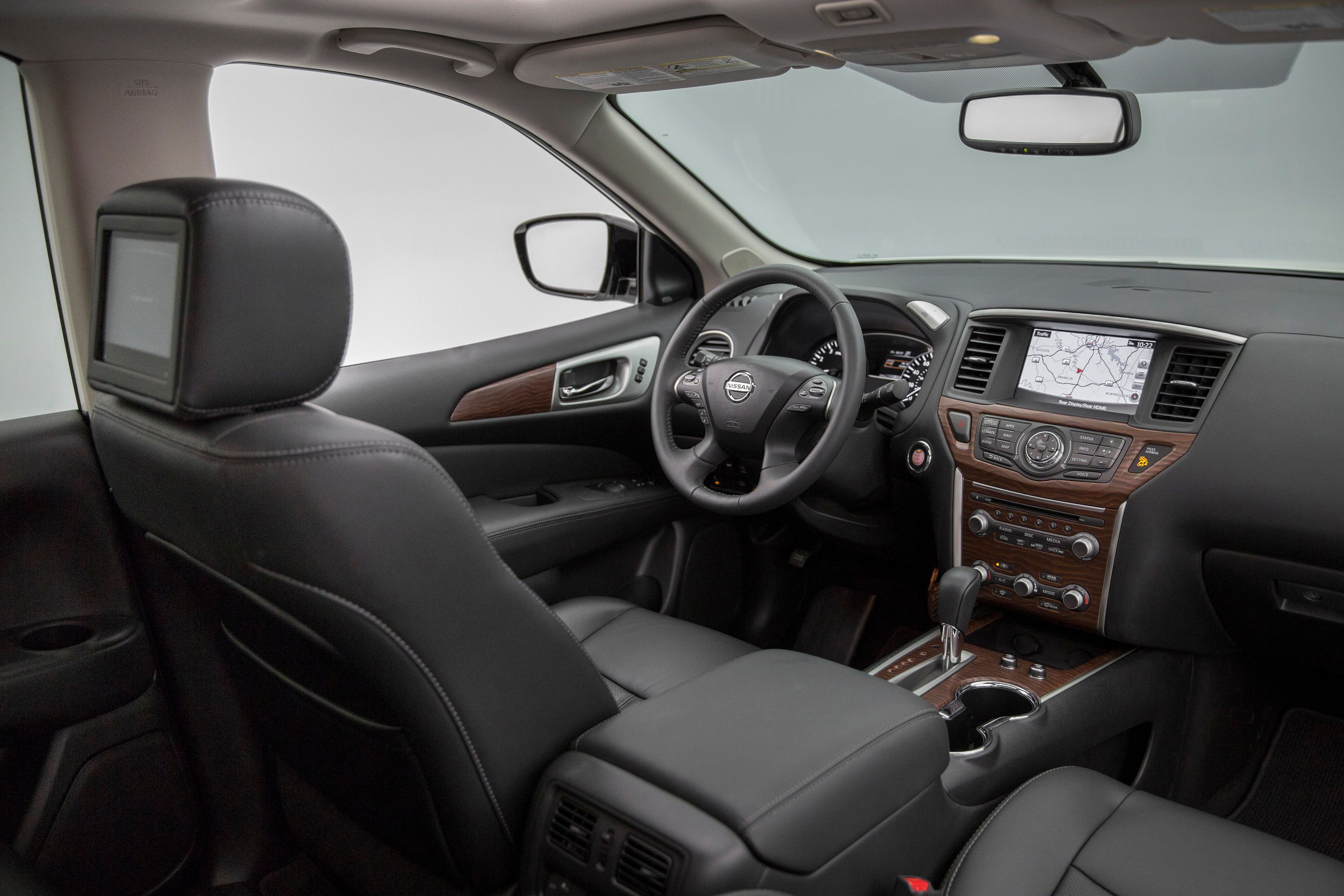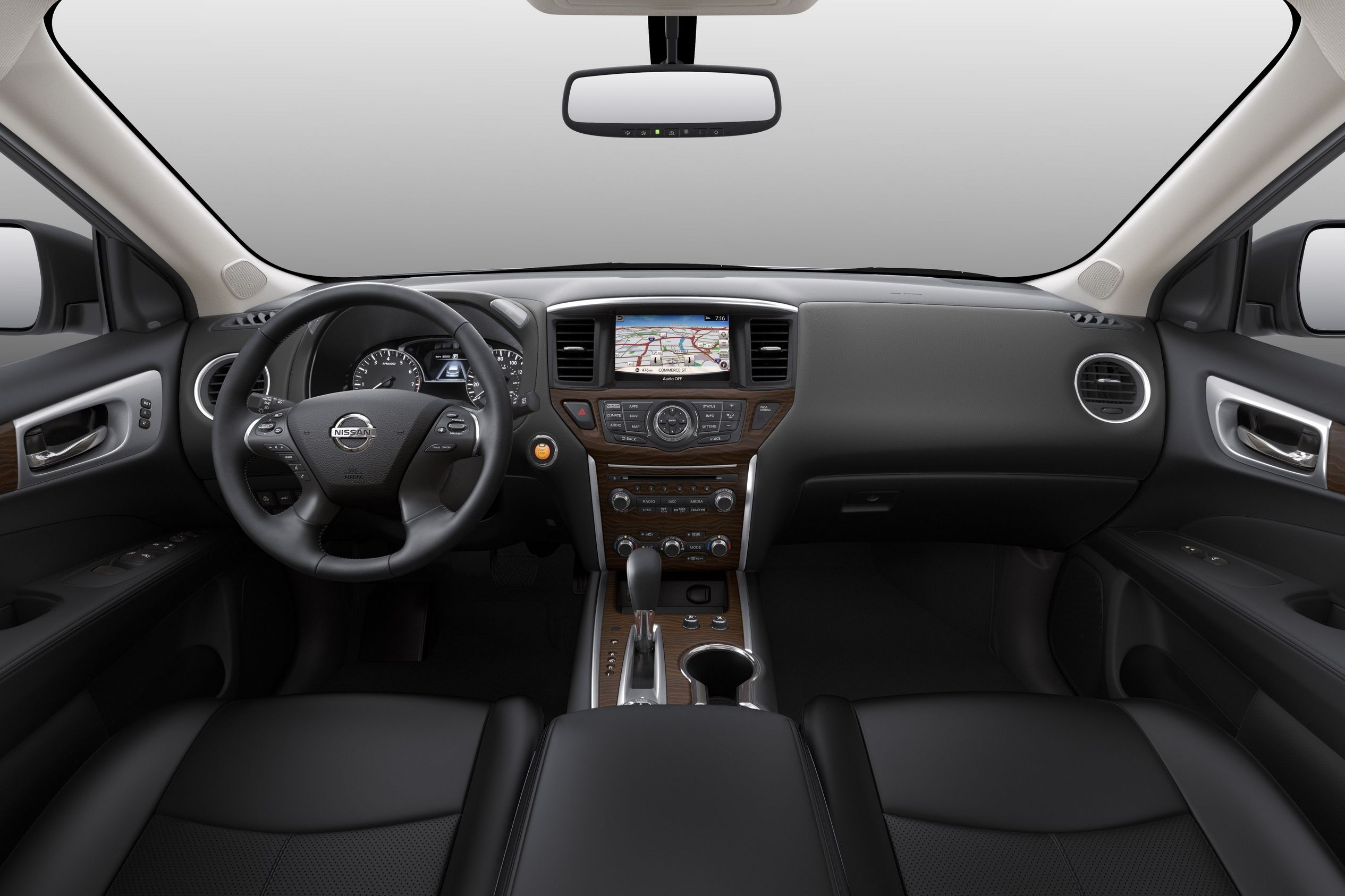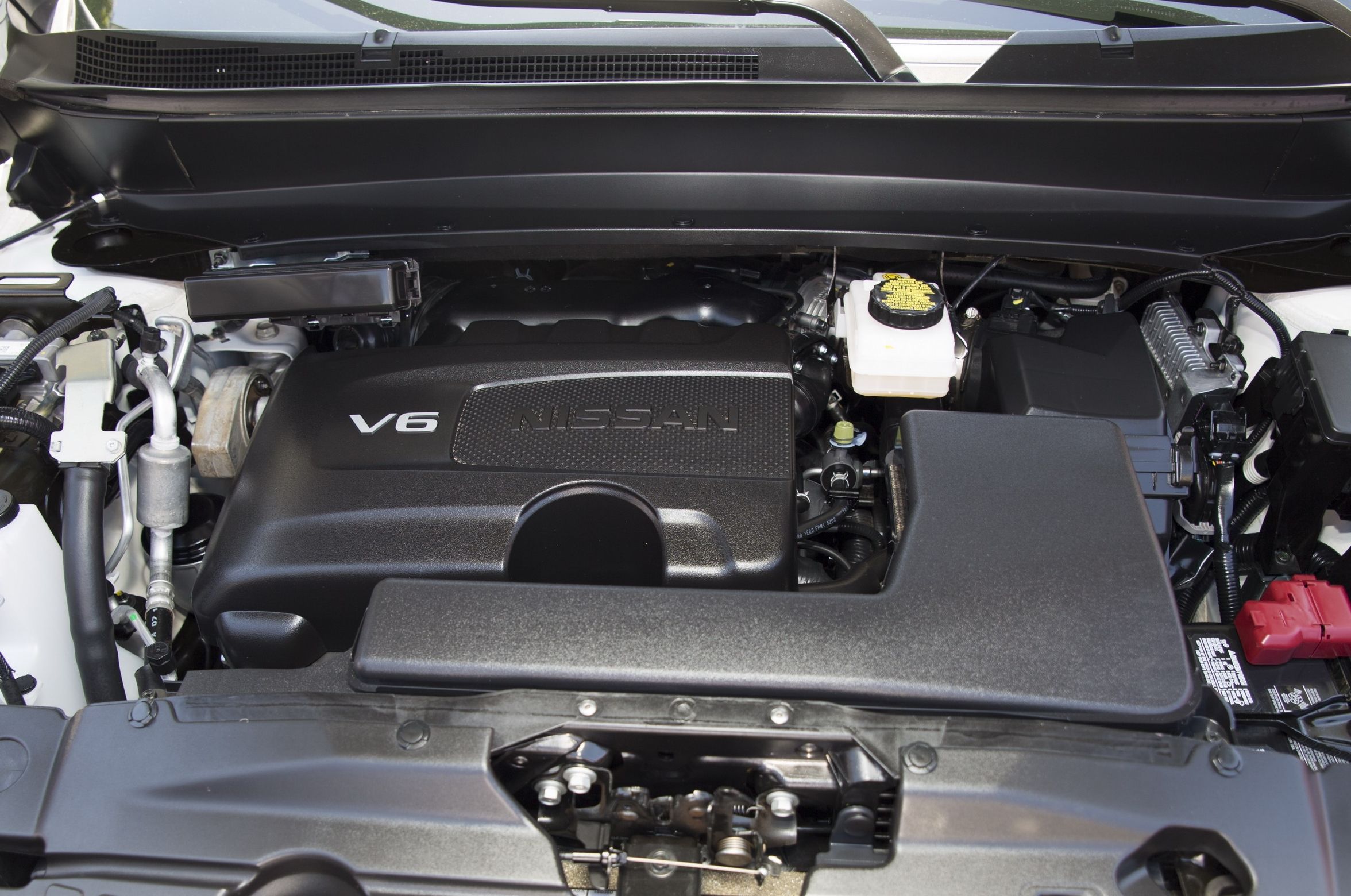In the past, Nissan has had a bad habit of letting the Pathfinder get old, with generations lasting eight to 10 years with a few minor facelifts in between. The fourth generation model made its debut for the 2013 model year and went through an update just a year later. There have been little changes since the last update, but nothing excessively serious. Now, Nissan has announced the 2017 model and, believe it or not, it’s a pretty big deal. As part of the facelift, the Pathfinder finds itself with a new 3.5-liter engine under the hood that offers more power, new front and rear fascias, new and updated technology, and there is even a bump up in towing capacity.
When speaking about the new engine, Michael Bunce – the Vice President of Product Planning for Nissan North America – said, “Like every area of a vehicle, engines evolve. The key in doing so successfully is in understanding where you are going with the changes. With the new Pathfinder, the goal wasn't to add raw power, it was to enhance driving feel and confidence across the entire rpm range – whether merging on a freeway on-ramp or pulling a trailer full of watercraft up to a mountain lake.”
There really is more to talk about that just that new engine, so let’s take a good look at the 2017 Pathfinder and talk about all the changes that come with the new model year.
Update 08/24/2016: Nissan has finally announced pricing for the 2017 Nissan Pathfinder. Check out the Prices section below for all the details.
Continue reading to learn more about the 2017 Nissan Pathfinder.
2017 Nissan Pathfinder
- Make: Array
- Model: 2017 Nissan Pathfinder
- Engine/Motor: V6
- Horsepower: 284
- Torque: 259
- [do not use] Vehicle Model: Array
Exterior
While the Pathfinder did technically get a new front fascia, there isn’t a lot it that has changed. You’ll notice that the V-motion grille has now been refined with a smoother look created by the rounded transition between the sides of the grille and the bottom. Furthermore, the grille is actually in the shape of a flat-bottomed V instead of the weird rectangular look from last year. The point is, the grille now extends down into the front fascia a bit, giving the center of the front fascia a recessed look.
The other major change also comes out of necessity thanks to the redesigned headlight units. The come with a new lens layout and a refined bottom edge that has a zigzag to it – a feature that leads to another minor change in the front fascia. Outside of this, the fog light bezels in the corner air inlets are now a little higher and more upright, while the air dam isn’t quite as wide as before. Rounding of the front end is a new hood than now features a sharp drop off at the nose as opposed to the smooth curvature of the outgoing unit.
While the front end did take a considerable number of minor changes, the side profile has remained almost the same. In fact, the only difference to the side comes in the form of new side view mirrors. If you look at last year’s model and the 2017 model, you’ll notice that the side view mirrors are now sleeker with a shorter profile that vaguely reminds me of the mirrors on the 2015 Ferrari California T. For 2017, they body of the mirror is painted in the same finish as the body, with the arm and mount in the corner of the door finished in a gloss black.
Around back, the changes are even more mundane – in fact, the taillight units actually got a downgrade as far as I’m concerned. Last year’s model featured a lens layout that was half clear and half red. For 2017, the shape of the lights remains the same, but the lens is almost completely red with a small clear spot on the hatch-mounted portion of the lens for the reverse light. Did Nissan find a storage unit full of old taillight lenses or something? Maybe so, because this lens layout is heavily outdated in today’s market. The rear fascia is supposed to be new, but the only change is noticeable just below the taillights. Instead of gradually and smoothly transitioning into that 90-degree bodyline, the fascia now features much sharper design cues. Otherwise, everything else out back is the same.
Interior
In the inside, there isn’t really a whole lot of change to speak of. But, before I go into details here, let me just say that I love the way the Pathfinders interior for this generation is so simplistic and functional. The dash is smooth, as is the center armrest. The seats feature detailed stitching, but nothing too wild or outrageous. To put it shortly, the interior is inviting.
Now, for 2017, Nissan claims the Pathfinder got a redesigned center console. I have to be honest here; I think someone at Nissan is trying to pull one over on us. If you compare the interior of the 2016 model to the 2017 model, this “redesign” is nothing more than addition of standalone cup holders (the 2016 model had a recess in the middle that linked the two.) The gear shifter, outlining trim, and all the buttons on the center stack carry over from last year. Redesign? I hope the engineer in charge of redesigning didn’t log too many hours on this one.
On another side of things, Nissan also claims there are new metallic and wood finishers, which may be true, but again, this looks like more of a downgrade. If you take a look at the interior of the 2016 model, the coloration of the wood trim and metal inserts is vibrant and classy. The 2017 model? Everything seems duller and more lackluster than before – almost like someone forgot a final coat of lacquer or clear coat during manufacturing.
Okay. Enough ragging on Nissan’s idea of “new.” There are some cool changes to talk about here as well. For starters, the Pathfinder received a new infotainment system with an eight-inch display and improved human-machine interface. Last year’s model had a seven-inch display. The system includes SirriusXM radio capability and Bluetooth connectivity as standard. There is also an update to the display in the instrument cluster, which now has additional driver assistance and infotainment functions. The interior microphone, which is used for voice commands and Bluetooth calling, has been upgraded to a new high-definition unit.
A new NissanConnect navigation system is optional on SV and SL trim levels and standard on the Platinum trim level. This brings ties together voice recognition to allow one-shot voice destination entry and three years of SirriusXM Traffic to keep onboard maps up to date. The Platinum trim level can also be optioned with the Family Entertainment Package, which adds a new HDMI input, USB port, and two eight-inch, QHD headrest monitors for rear-seat passengers. The system is DVD-based and includes wireless headphones, remote control, and rear headphone jacks with volume control. Not bad, if you’re willing to fork out the money for the range-topping model and add on the option.
Drivetrain
The biggest news about the 2017 Pathfinder comes in the form of a new engine. It’s still a 3.5-liter V-6 like that found in the 2016 and older models, but by the use of direct injection, mirror bore cylinder coating, a variable displacement oil pump, new electronic control module, new pistons, new air intake system, and an elevated 11.0:1 compression ratio, it is able to pump out 284 horsepower and 259 pound-feet of torque. That’s an increase of 24 horsepower and 19 pound-feet over last year’s model. Power is routed to the wheels via Nissan’s third-gen Xtronic CVT transmission with D-Step logic control. That logic control, by the way, simulates shifts to give a “more natural acceleration feeling.”
As part of the 2017 update, Nissan also revised the chassis and suspension system. To start, engineers reinforced the trailer hitch area, allowing properly equipped models to pull up to pull a full 6,000 pounds. That’s an increase in capacity of 1,000 pounds over last year’s model, and that D-Step logic control is said to allow towing with the feeling that the transmission is hunting for a gear. Furthermore, the suspension has been updated with stiffer shocks (11-percent stiffer up front and seven-percent stiffer in the rear.) The front now has rebound spring front struts, while the rear spring rate has been increased by a surprising 25 percent. This translates to a smoother ride overall and reduced body roll compared to last year’s model.
Safety
Most of the safety equipment from last year carries over, but this year the Around View Monitor now has moving object detection – a feature that wasn’t available previously. Other safety upgrades include the availability of intelligent cruise control and forward emergency braking, both of which were also unavailable prior to the 2017 model year.
Prices
As expected, the pricing for the Pathfinder has increased marginally across the range. Available in four trim levels, each available in two- or four-wheel drive, the 2017 Pathfinder starts out at $29,990 for the entry-level, two-wheel drive, S trim level. Moving up to the 2WD SV trim will set you back $32,680, while the 2WD SL commands $35,700 and the Platinum calls for $41,870. Getting any trim level in four-wheel drive will add an extra $1,690 to the ticket, bring the price of the S trim up to $31,680, the SV up to $34,370, the SL up to $37,390, and the Platinum up to $43,560. Compared to last year, this is a minor pricing increase that is averaged at around $160. Not bad!
|
Pathfinder S 2WD |
$29,990 USD |
|
Pathfinder SV 2WD |
$32,680 USD |
|
Pathfinder SL 2WD |
$35,700 USD |
|
Pathfinder Platinum 2WD |
$41,870 USD |
|
Pathfinder S 4WD |
$31,680 USD |
|
Pathfinder SV 4WD |
$34,370 USD |
|
Pathfinder SL 4WD |
$37,390 USD |
|
Pathfinder Platinum 4WD |
$43,560 USD |
Competition
Ford Explorer
The Ford Explorer has been around since 1991 and replaced the old Bronco II. The most recent generation took on a facelift for the 2016 model year with new front and rear fascias, an all-new grille, redesigned headlamps and an overall bolder look that makes the hatred you probably have for the old “Exploders” kind of, well, fade away into the back of your mind. Like the 2017 Nissan Pathfinder, the 2016 Explorer got something new under the hood as well. The new engine is a 2.3-liter four-cylinder that's shared with the Mustang and Lincoln MKC with 270 horsepower and 300 pound-feet of torque on tap. There is also a 3.5-liter V-6 that pumps out 290 horses and 255 pound-feet, or the range-topping, 3.5-liter, EcoBoost that delivers a decent 365 horsepower and 350 pound-feet. In case you were wondering, that 3.5-liter EcoBoost is the engine you want as long as you’re willing to give up the fuel economy afforded by that new 2.3-liter EcoBoost.
Unlike the Nissan Pathfinder, the 2017 Explorer is already on sale and starts out at $31,160 for the entry level model. Prices climb gradually over four other trim levels with the range-topping Platinum model commanding a shocking $53,235. Also, it’s important to note that this generation Explorer is also offered by Braun as a wheel-chair accessible model, which makes the Explorer the first SUV to be offered with that capability.
Read our full review on the Ford Explorer here.
Honda Pilot
Unlike the Explorer and the Pathfinder, the Honda Pilot went through a recent generational update for the 2016 model year. In short, Honda’s resident SUV offering was completely redesigned, dropping the boxy look of yesteryear, and shed a few pounds to go with its sportier appearance. The Pilot is currently available in five different trim levels, all of which benefit from a 3.5-liter V-6 that delivers 280 horsepower and 262 pound-feet of torque. Pricing starts out at $30,145 for the entry-level LX model and climbs fairly across the model range to as has as $46,570 for the range-topping Elite trim level. All-wheel drive is available on the LX, EX, EX-L, and Touring trims, and comes standard on the Elite model. The three lower trim levels see power delivered to the wheels through a six-speed automatic, while the Touring and Elite trim levels get a nine-speed automatic that provides improved fuel economy, improved driving characteristics, all-electronic shifting (shift-by-wire) and paddle shifters.
Read our full review on the Honda Pilot here.
Conclusion
Despite never officially owning one, I’m actually a pretty big fan of the Nissan Pathfinder. I think the cabin is simple and functional. It tends to fall on par with more premium models without the headache of all those pain-in-the-ass, hard to learn features found on some models. I never liked the way the grille looked on the older models, but for 2017, the “V” is more curved and refined, giving the front end better curb appeal. With the updated model likely to see a marginal price increase over the 2016 model, Nissan will probably try to keep its main selling point, which is the fact that it has – in the past – been just a little bit cheaper than the Ford Explorer, Honda Pilot, and Toyota Highlander. The updates for the 2017 model year should be more than enough to keep the model fresh for another few years when Nissan should introduce the next-gen model.
Update History
Update: 07-13-2013: We created a new video highlighting the features of the new 2017 Nissan Pathfinder. Press play on the video above to check it out for yourself.


